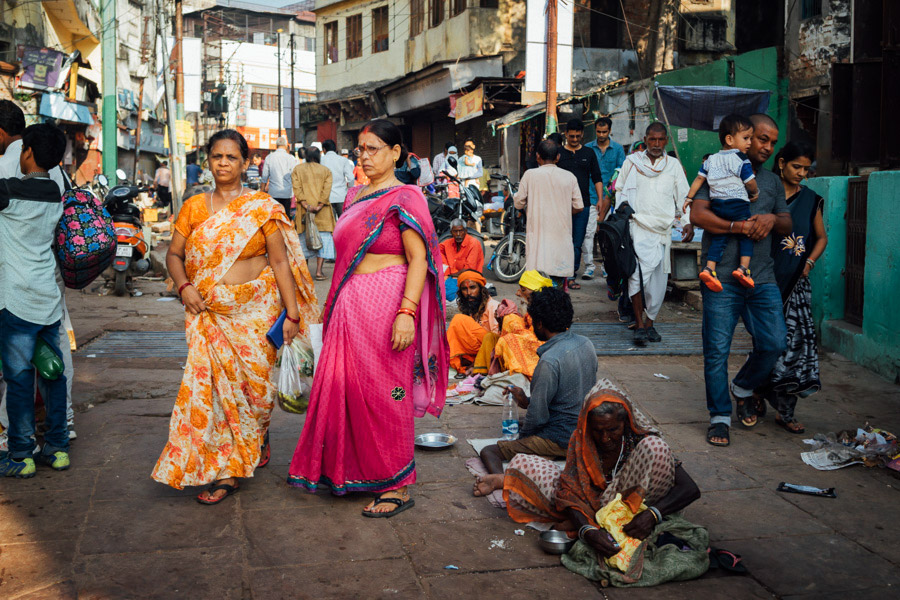Another taxi from the airport, along the countryside of India, continues to glue us to the windows. Roaming dogs leave their place to cows, freely walking on roads jammed with cars, waiting for them to get out of the way. The sacred animal should not be too disturbed; hopefully the honks are enough to shoo them away. We are stopped a few blocks down from our guesthouse, and have to finish by foot, constantly accosted by touts trying to get us on a boat, sell us hashish, a tour, or anything we want. They’re insistent and frequently call to Madie with a “konnichi wa” or a “ni hao.” We manage to find the homestay and immediately set on a delicious lunch prepared by the mother of the house, and a first of many delicious baba lassis, a dessert of handmade yogurt and a variety of fruits.
Varanasi is a spiritual town, and an incredible site full of history. The Ganges lays on the side of the old city, with the many, ancient ghats (steps down to the river) letting anyone bathe in the sacred waters, for a blessing by the gods or a simple shower. The streets are narrow, of broken cobblestones, and with various smells of food, chai tea, and cow dung. Temples are many throughout town, difficult to find except for the locals coming to pay their respects to Ganesha, Shiva, or another deity. We explore the small alleys, marveled by their character, colors, and history. I place my palm on the wall, wishing I could learn its stories. But on tiny passageways barely fitting two people walking side by side, it’s a large bull you may cross paths with. He’s also exploring the city, depositing a few feces on the way. Even in these tight spaces the honks are present, motorcyclists swerving between people and pushing the passing cows with their feet.
At sunset, we experience the beauty of Aarti, the nightly Hindu ceremony of fire in celebration of the Ganges (or Ganga). Seven monks perform the ceremony, chanting hypnotizing verses; their synchronous dance with smoke and fire is joined by the crowd clapping. Many boats are set on the river for a perfect view, with a price of course. We sit quietly on the steps amongst the flood of people, closer to the monks than many; we become entranced, emotional, and can’t help but clap along the happy prayer. The show ends an hour later, everyone leaves after a mandatory selfie with a glimpse of the performers. Beggars and babas, the ascetic monks, are lined up outside the ghat. A few people have their head shaved, a sign of grief and bereavement. Varanasi is a place of pilgrimage for many, at the end of their life, or to accompany their deceased who will be cremated on the side of the river, a sight we will witness the next day. Thali and another delicious curry close this day.
We decide to walk towards the southern ghat, Assi, place for a sunrise ceremony we’ll never wake up for. As it turns out, traveling for a year and having the time for anything we want does not make of us early risers. As we walk up along the river, Madie wants to try paan, the local addiction made of betel leaf, more popular than cigarettes. A cultural custom, it’s actually quite tasty, but will make us spit dark red saliva for the next hour. I’m feeling a haze but can’t pinpoint whether paan or the blistering heat is at fault. Nevertheless, we explore the small streets and ghats along the way, swerving between cow dungs. A woman with her child begs for milk, not money, she promises - but we know this scam well from our time in Cambodia. The baby’s cries, as she follows me, still wound me deeply, and I get a little emotional. (Maybe paan is having an effect on me after all.) Profound sadness and anger overcome me: sadness for the situation this kid is put in, anger at the mother allowing it. India is already a special place to us, but the extreme poverty and constant begging is taking its toll.
We finally reach Assi Ghat and rest in the heat, as if the last two miles had taken hours. A short walk up is the Harishchadra Ghat where we observe the cremations. No pictures here, out of respect. A couple touts explain to us the tradition, hoping we will visit their silk shop later. But Madie and I stay silent, witnessing the sons bringing fire to their parents’ logs, with shaved heads and wet clothes. We cover our mouths as the smoke, with a scent of burnt skin, comes our way. Deeply humbled and a little emotional, we make our way back, leaving the boat ride along the river and a visit to the larger, main cremation Manikarnika Ghat for the next day.
Varanasi, the spiritual town - a place with too many, different emotions: the enchanting Aarti; the anger at parents letting their kids beg for them; the profound respect at the sight of cremations; the paradox and laughter of the comical babas, ascetic monks who live in extreme scarcity, having renounced material attachment, but not marijuana; the smells of cow poop filling the streets; the delicious lassis and chicken masalas; the small, cobbled streets full of colors and characters; the peaceful, incredible banks of the Ganges; the aggressive scooters swerving around dogs and their fleas. Someone wrote that Varanasi is India at its best. Maybe not the best, but a true force of nature and its people. We find the place entrancing, beautiful, smelly, delicious, and disrespectful all at once. Whatever people feel about it, it cannot be indifference. This is only day four in India, and we can’t keep up with all it’s sharing with us.
It’s time for the next city, a long night train to Agra. We find a cheap tuk-tuk on a tricycle. He’s cheaper than motorized transport and promises us to get there in twenty minutes. After a long, painful forty minute ride under the heat, he looks completely exhausted, but well earned his larger than expected tip. After a couple hours, we enter our train car, the second cheapest in the train - at least we get beds. We settle at our top bunks, welcomed by a young man studying tourism, and a grandpa without a word of English, staring at us with intensity. I can’t help but smile, he smiles back, larger than I could ever. No closed rooms in the train car, we’re in a large dorm of thirty or forty benches, with windows open throughout the night, letting all the dust and insects in. A dragonfly settles on my arm until I freak out and inadvertently send it through the fan next to my bunk. The train ride is three hours longer than expected (totaling 14 hours) - not really late by Indian standards. We make it to Agra, groggy, and, as in other rough times, somehow a closer, stronger couple. Travel tests you, as an individual and as a couple, in all possible ways. There was no better way to spend our anniversary after all.
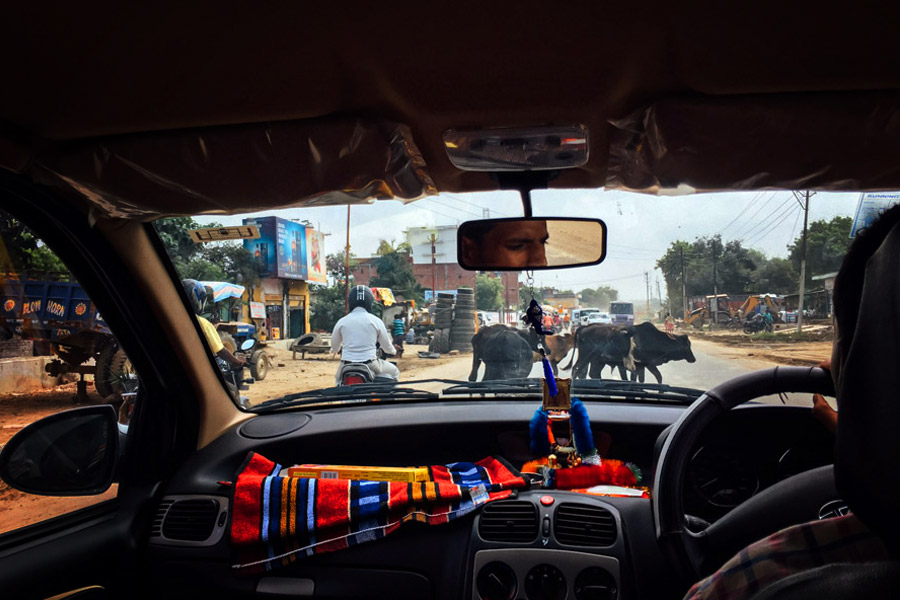
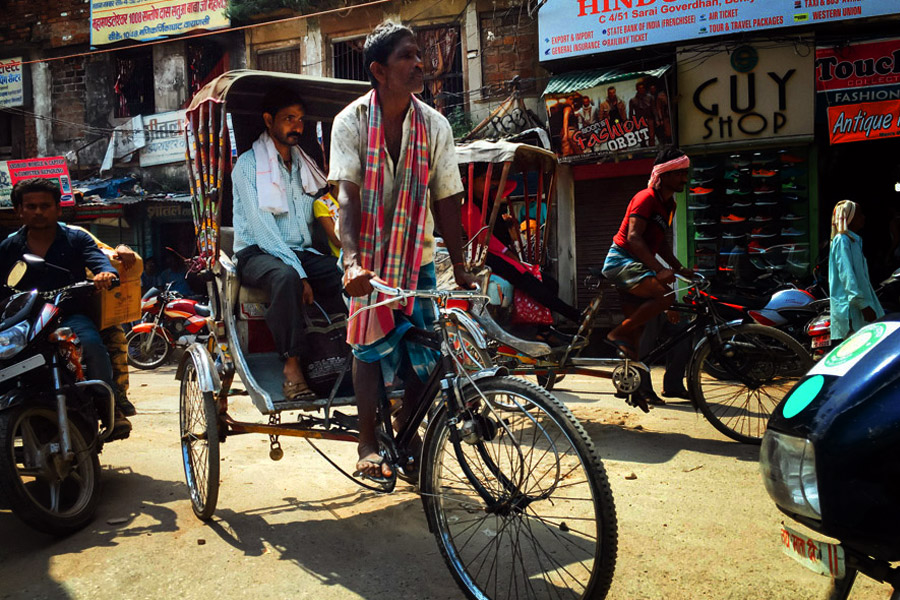
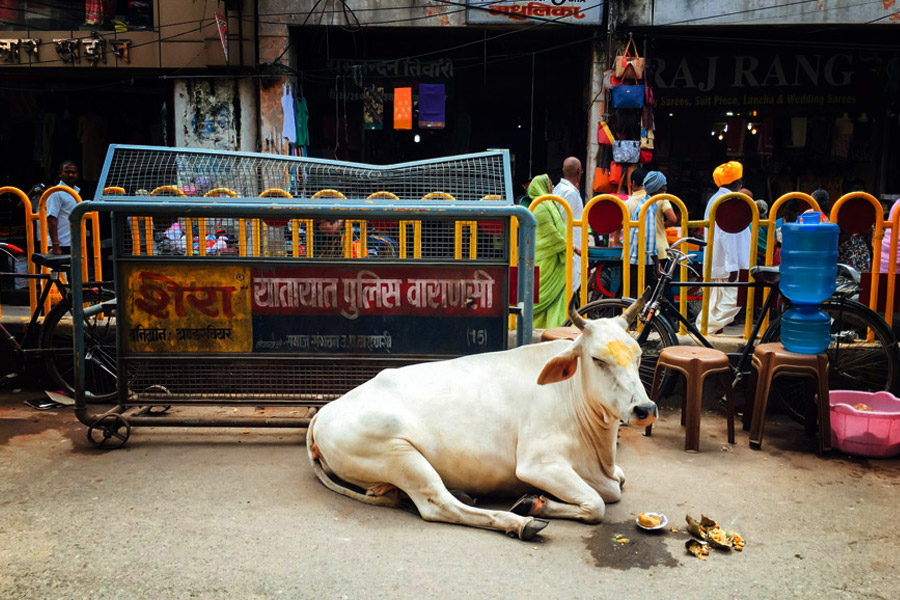
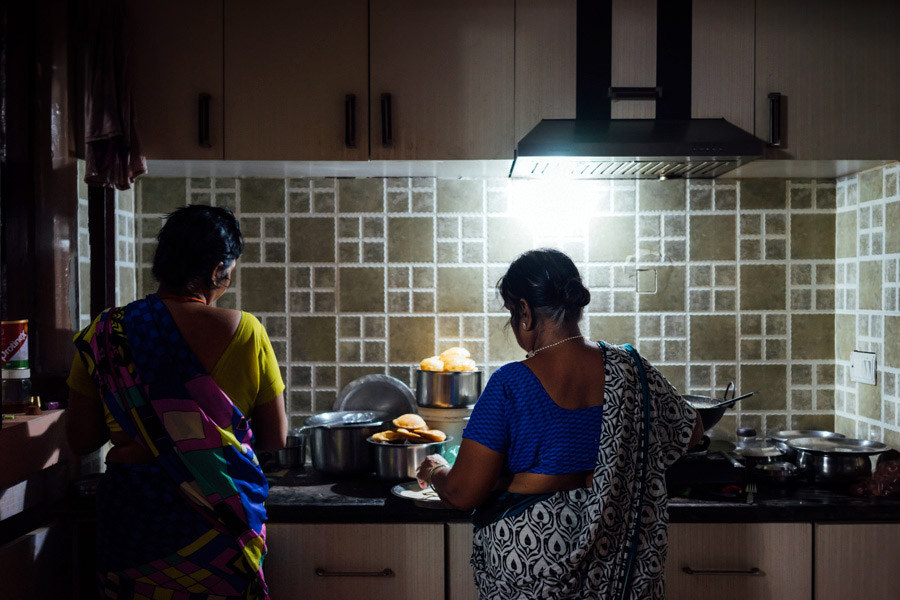

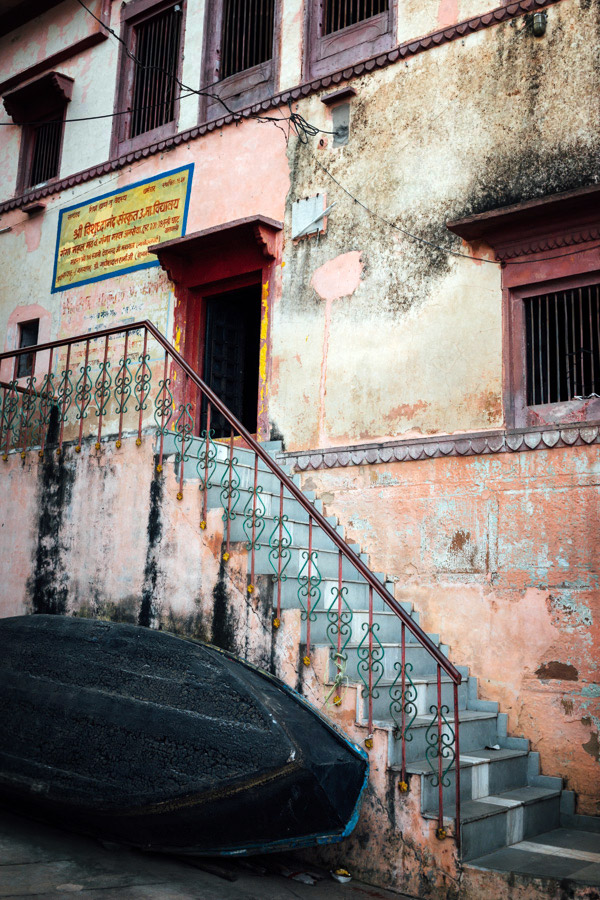
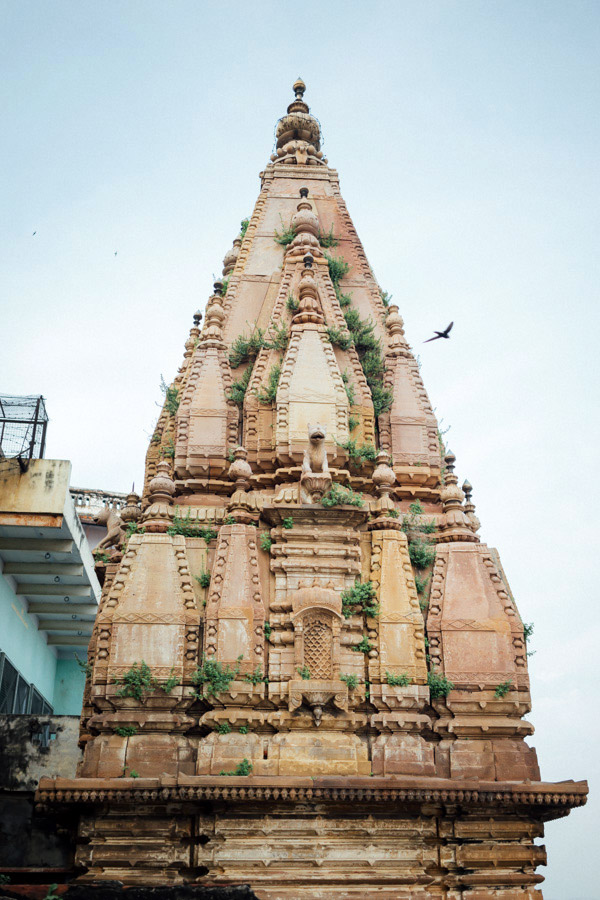
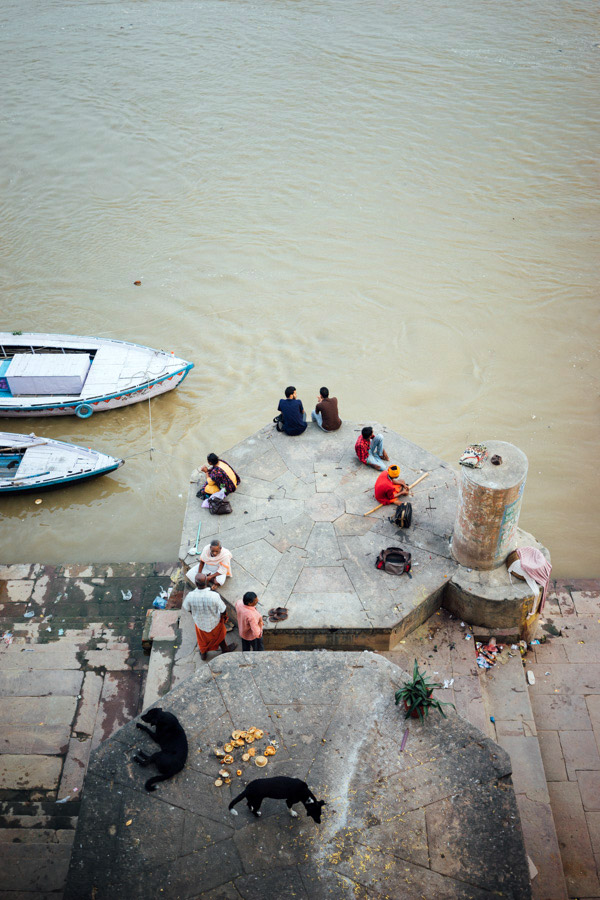

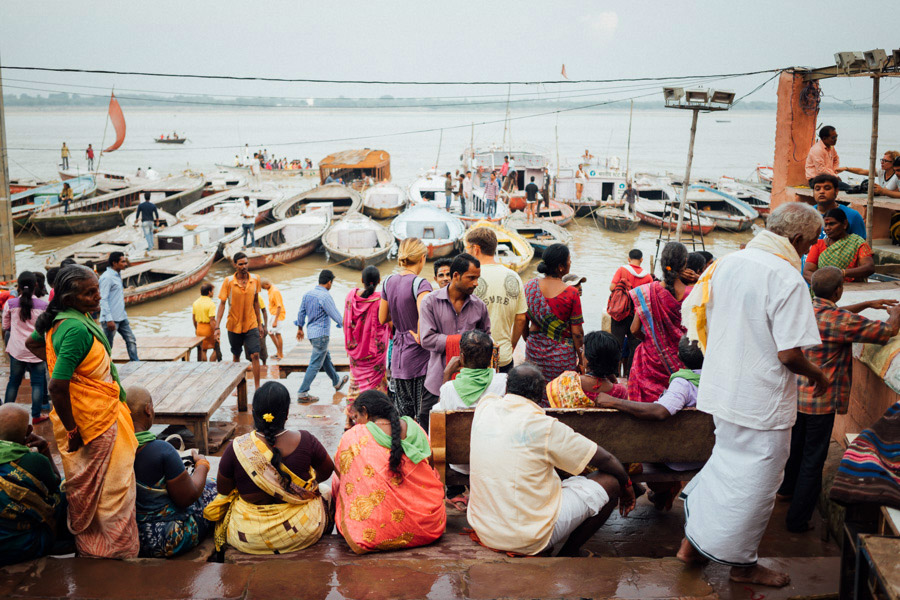
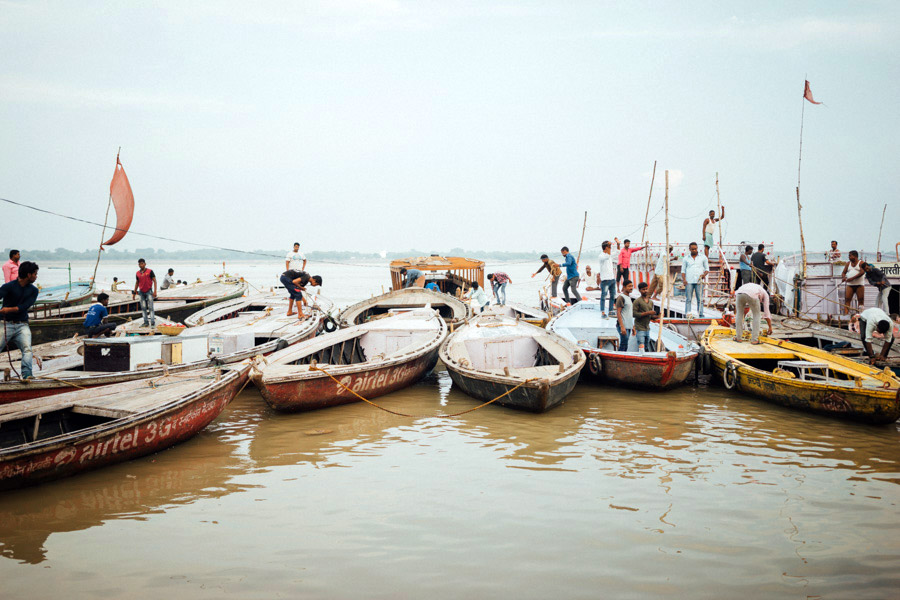
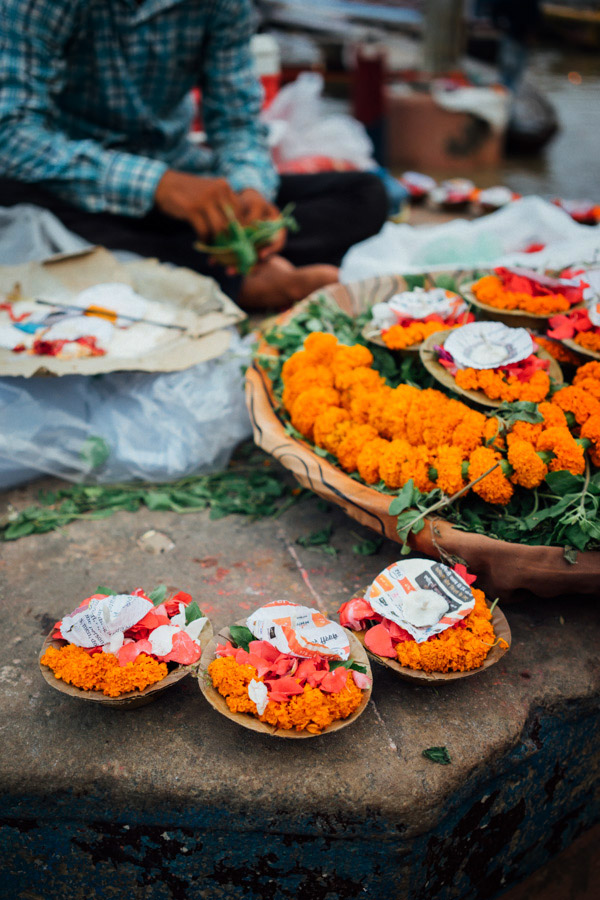
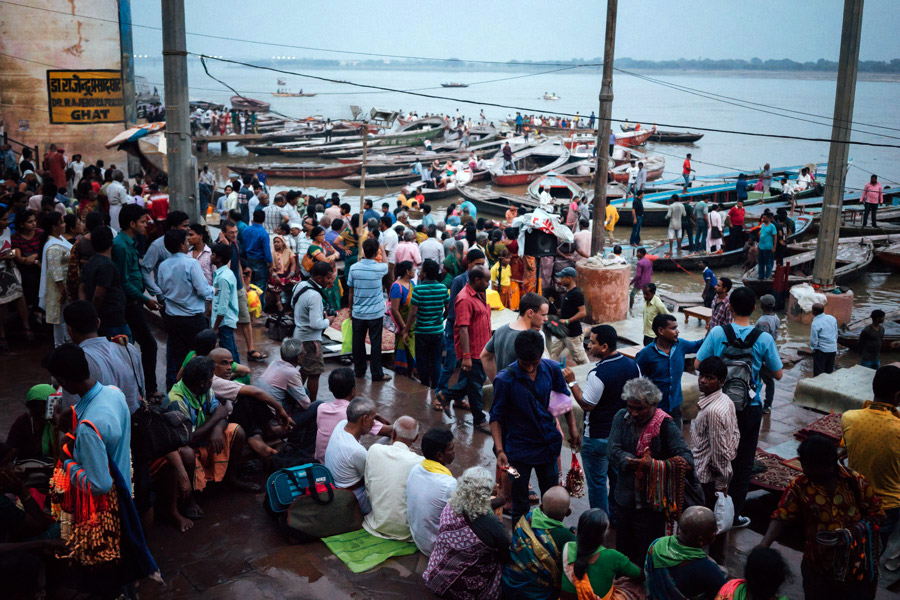
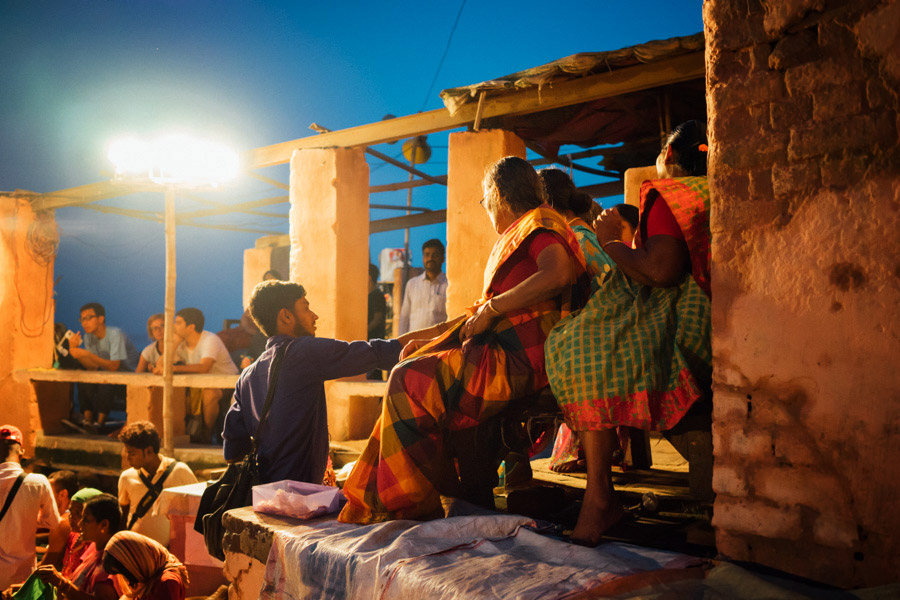
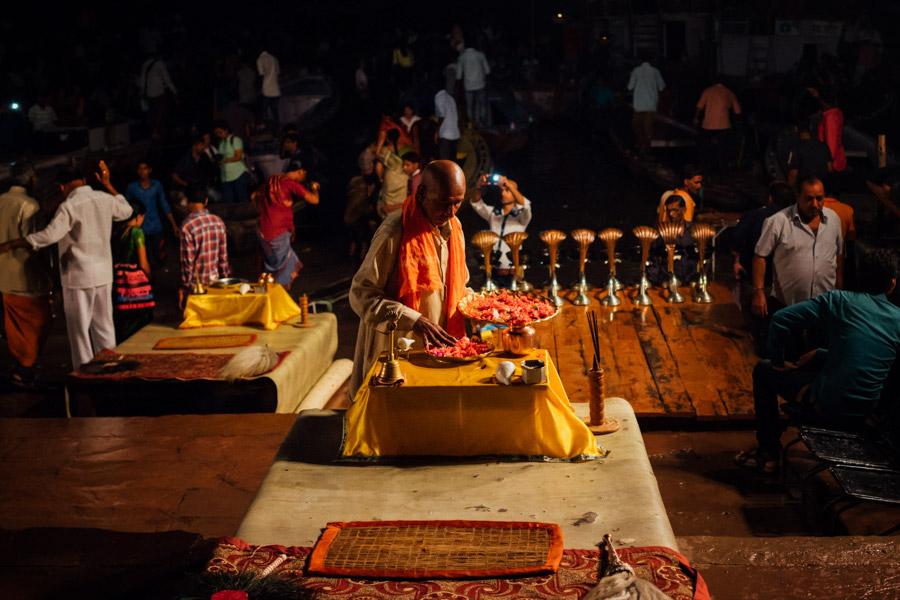
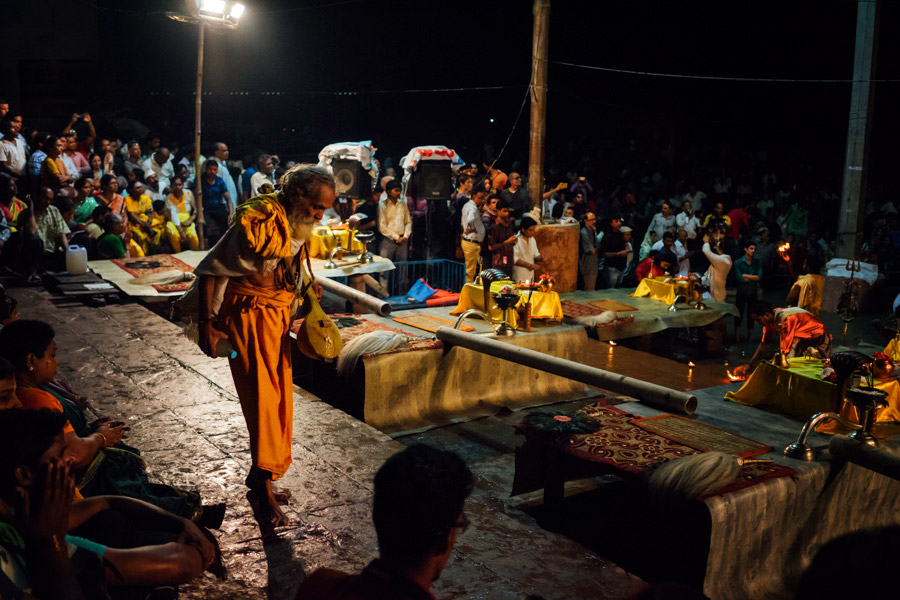
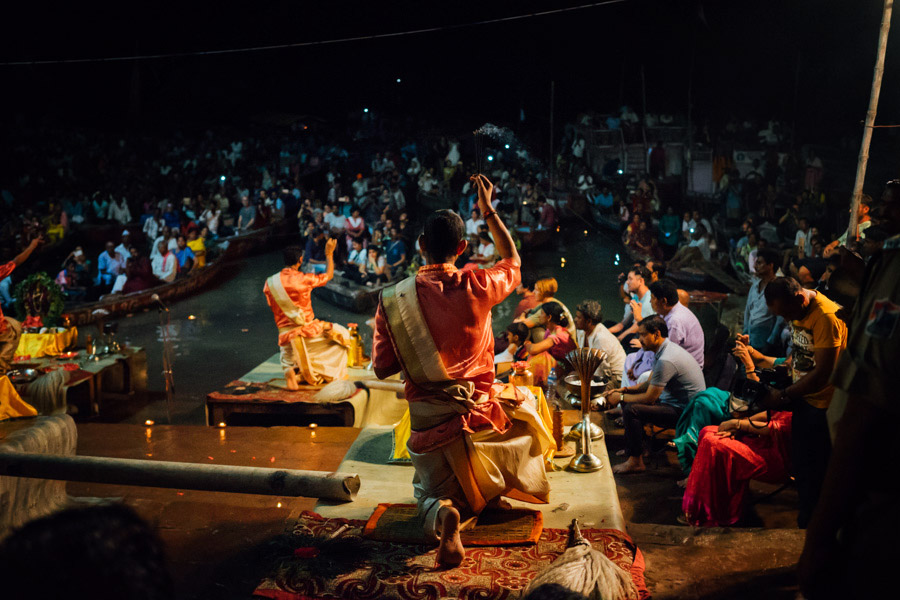
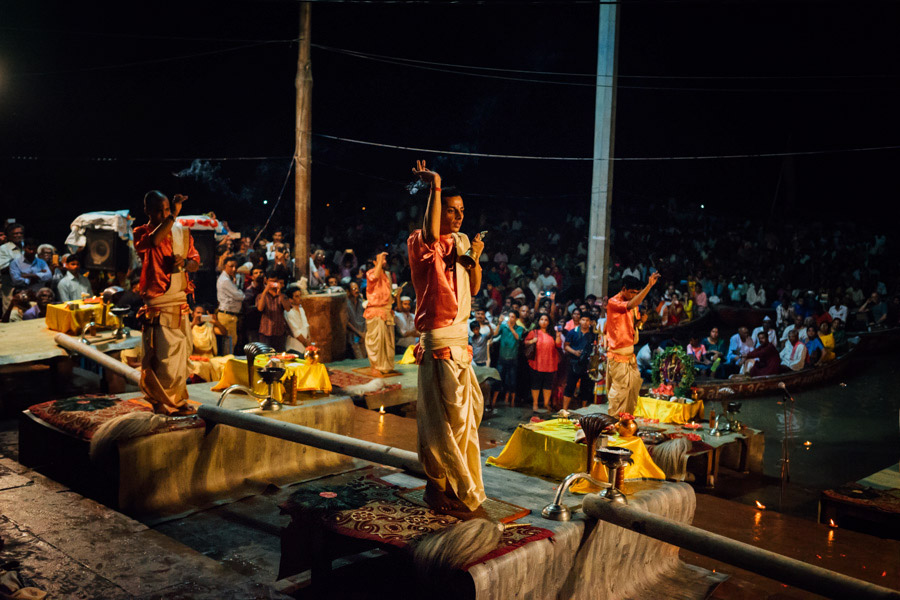
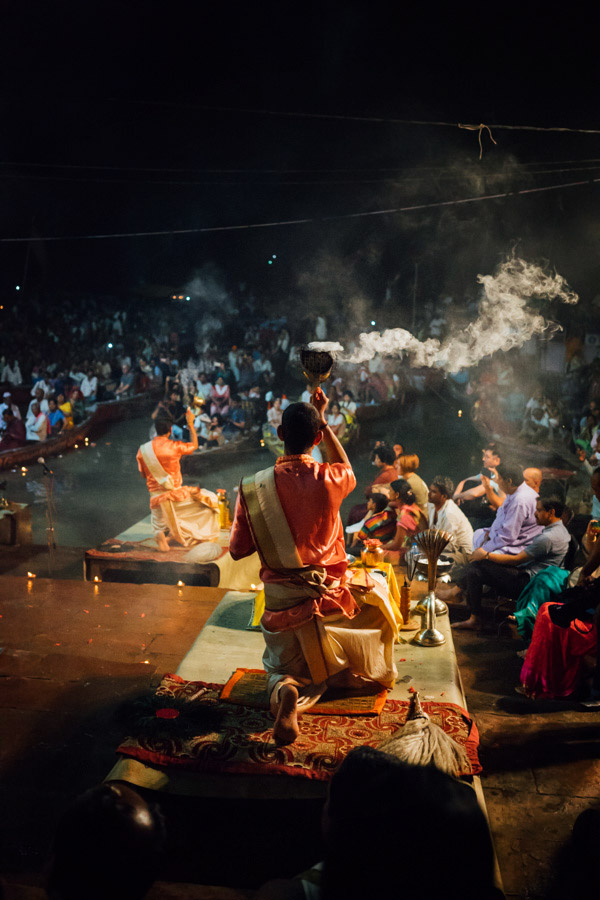
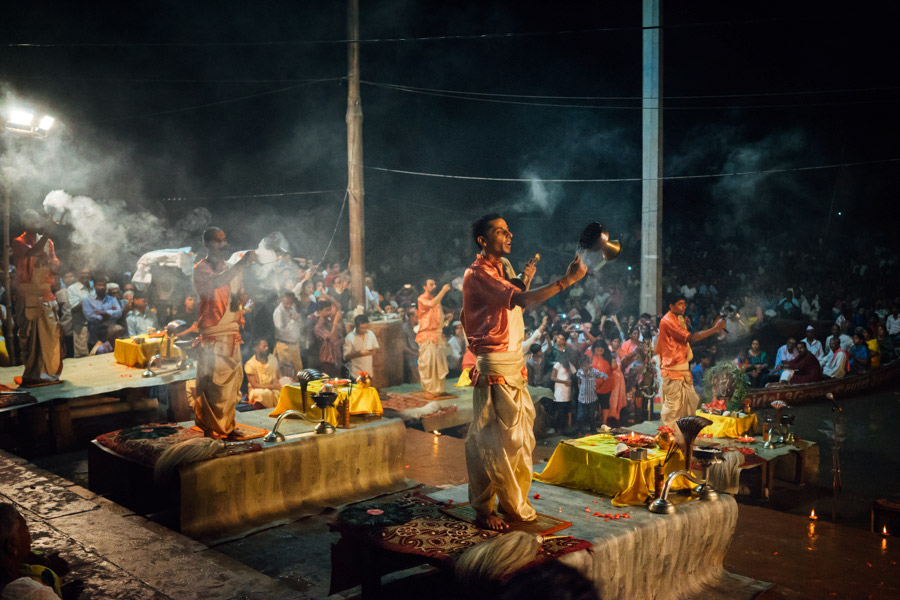
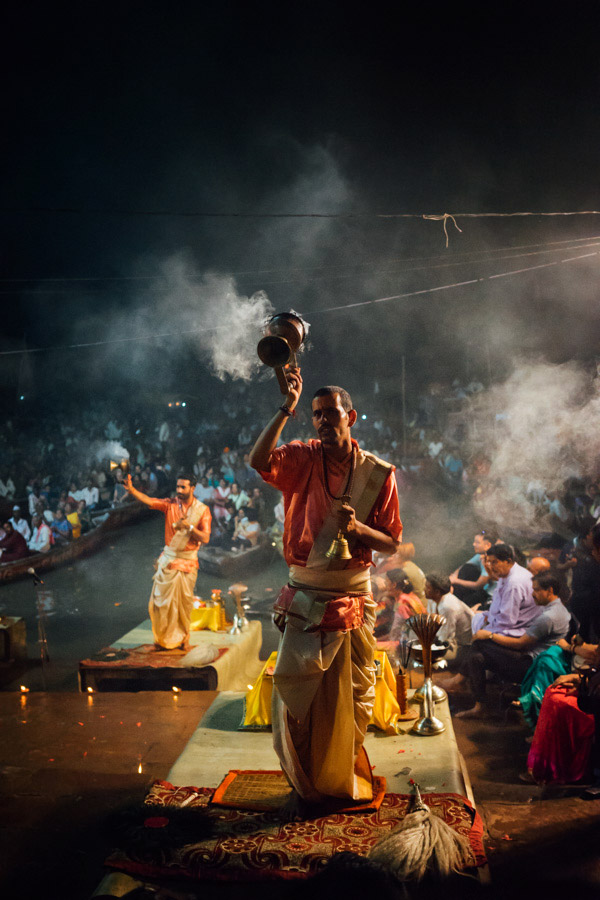
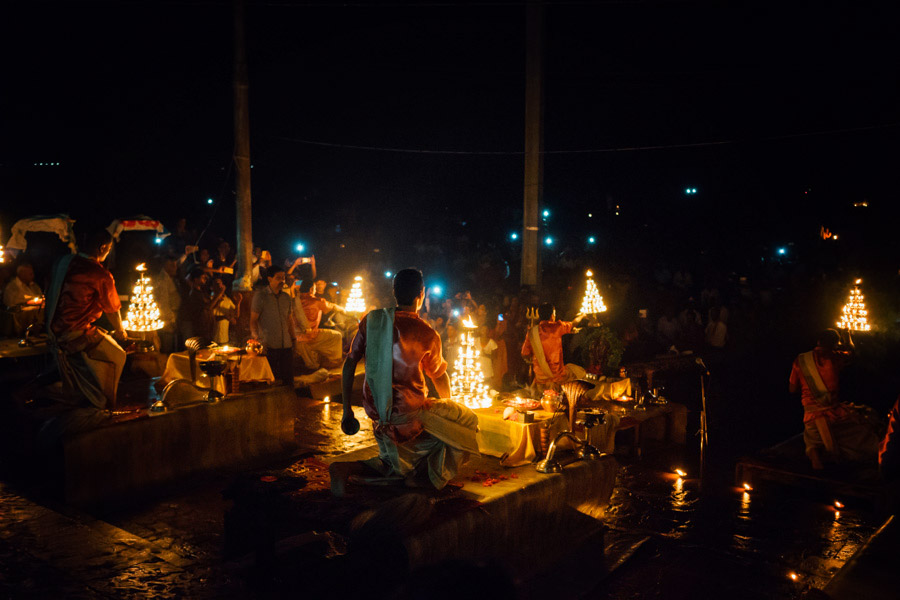
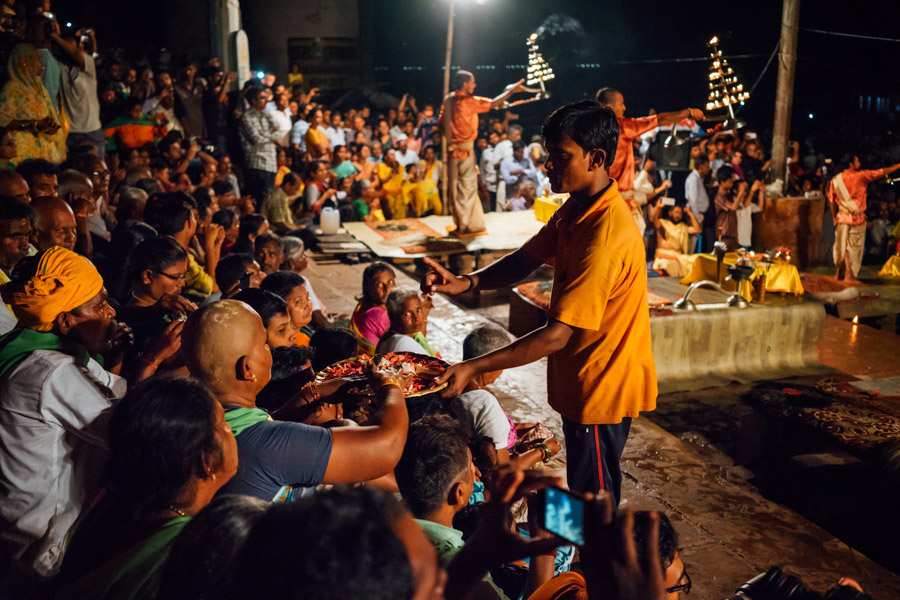
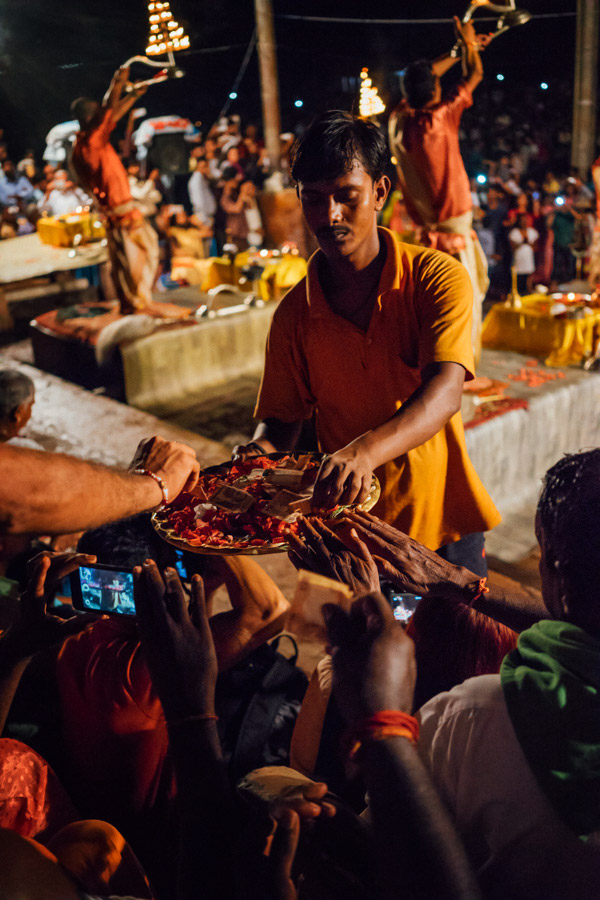

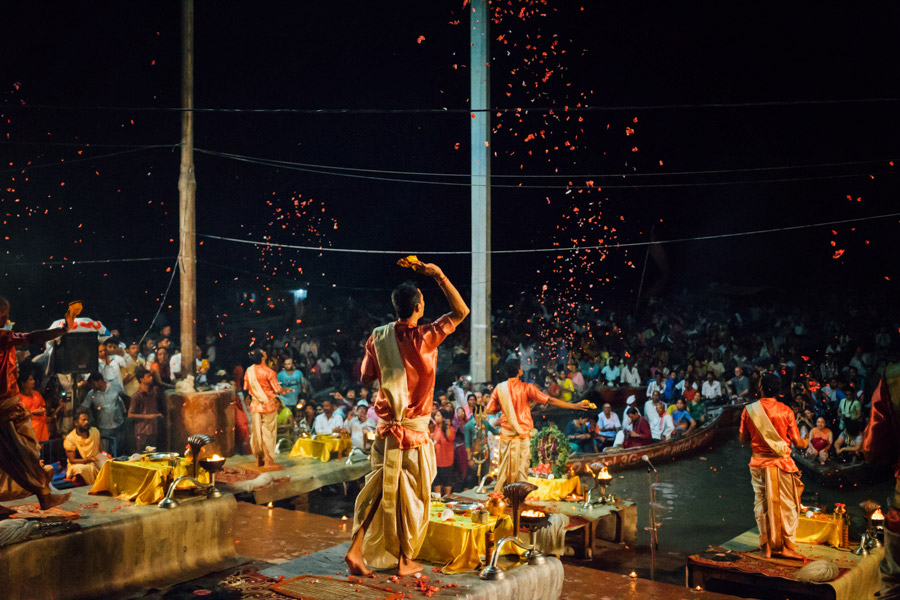
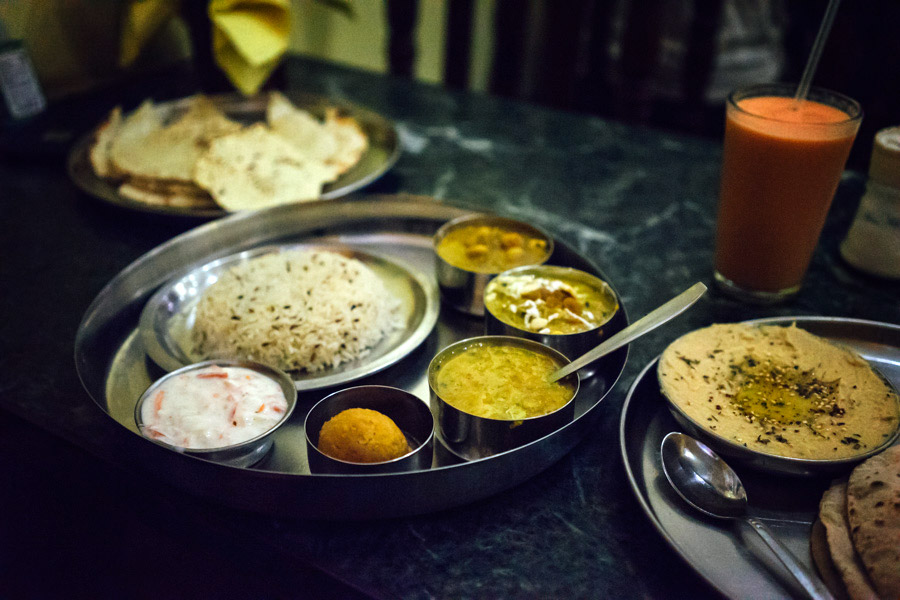
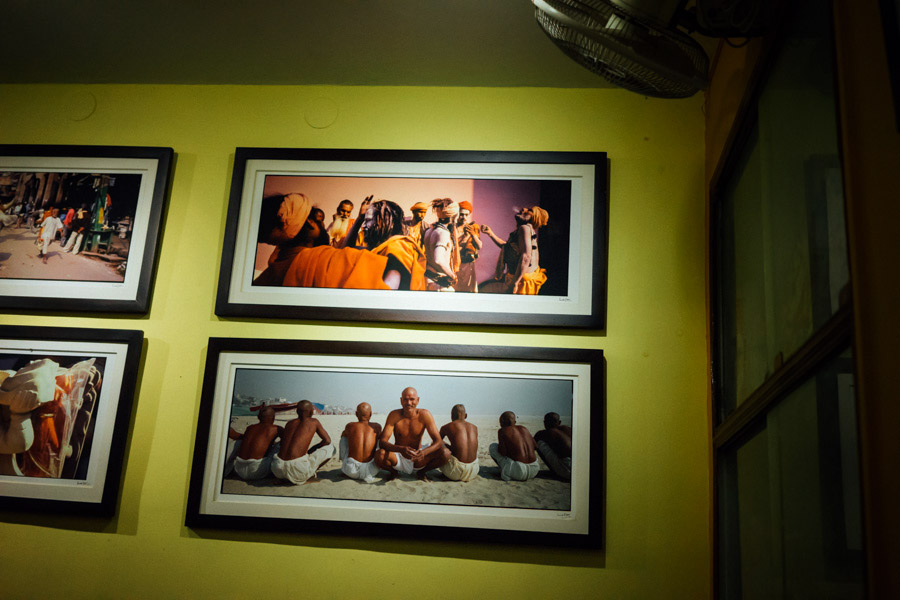
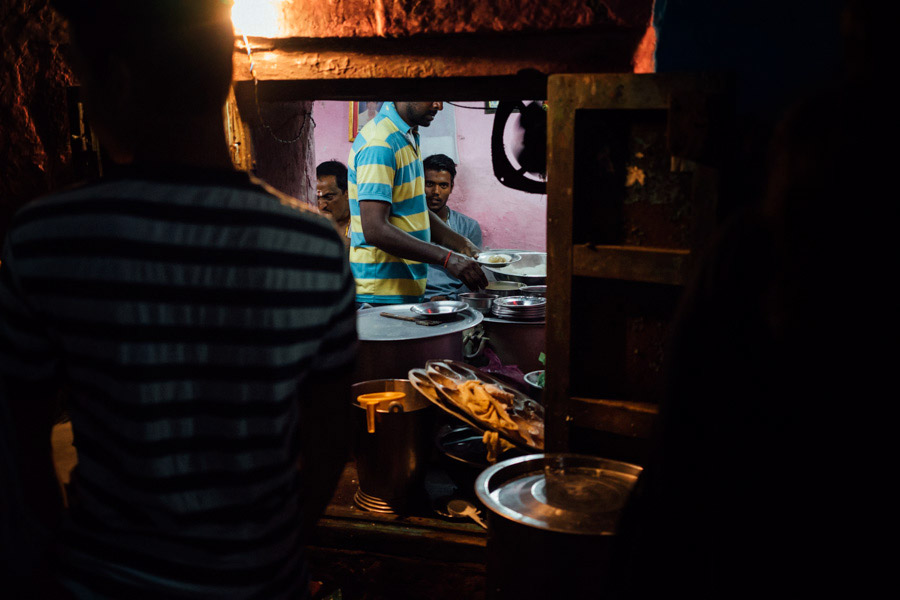
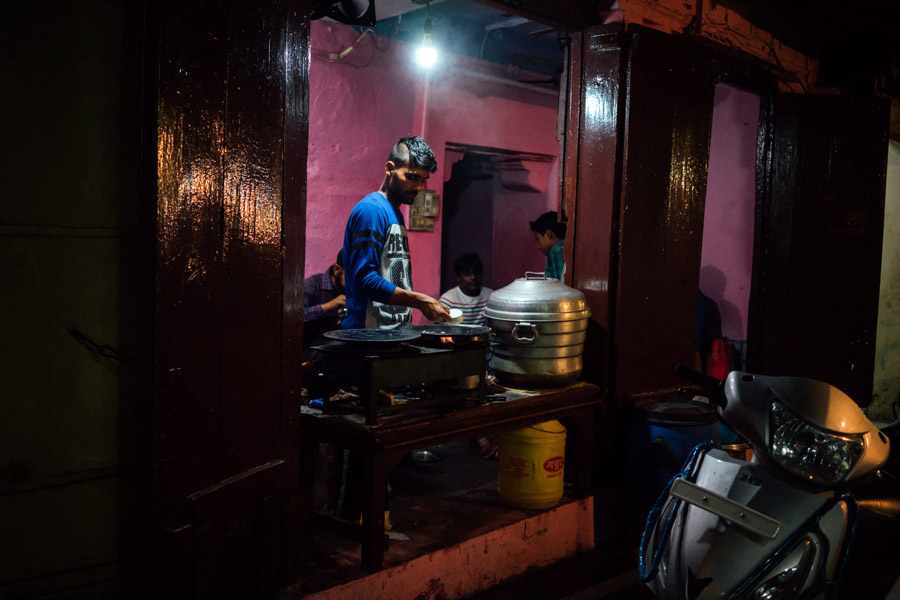

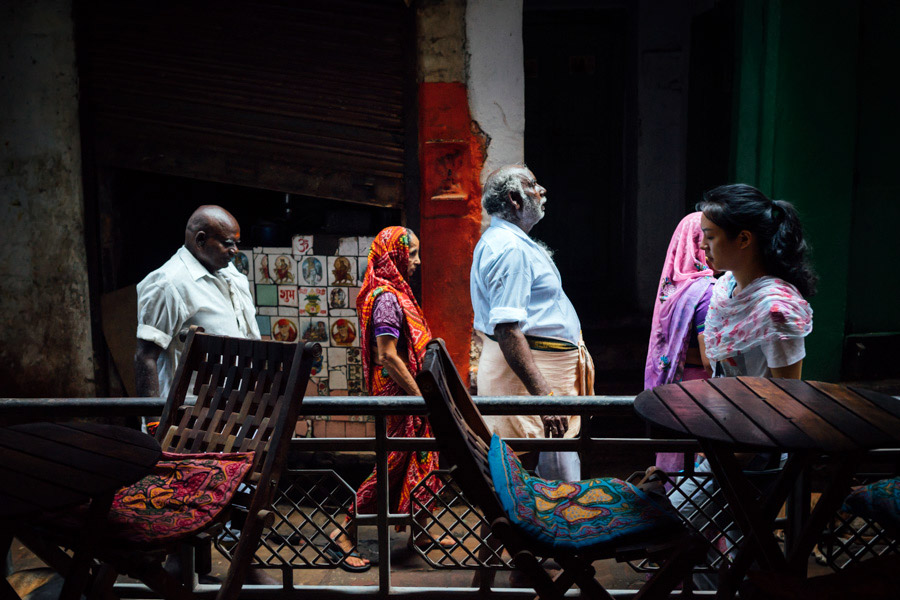
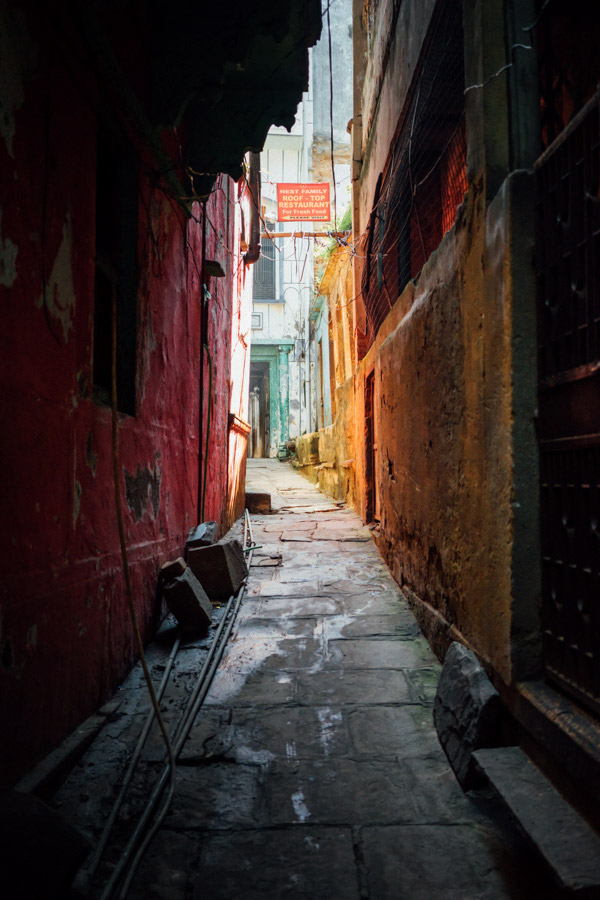

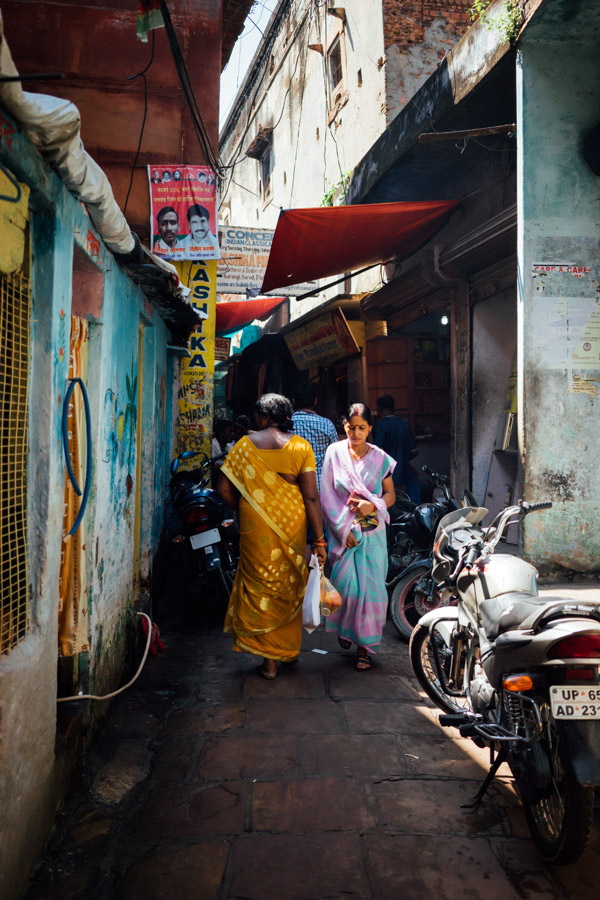
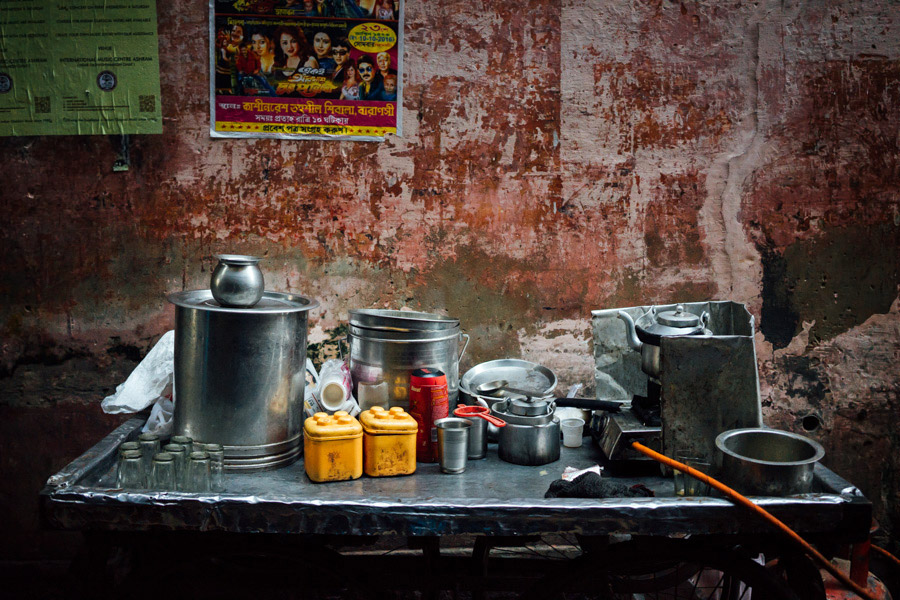
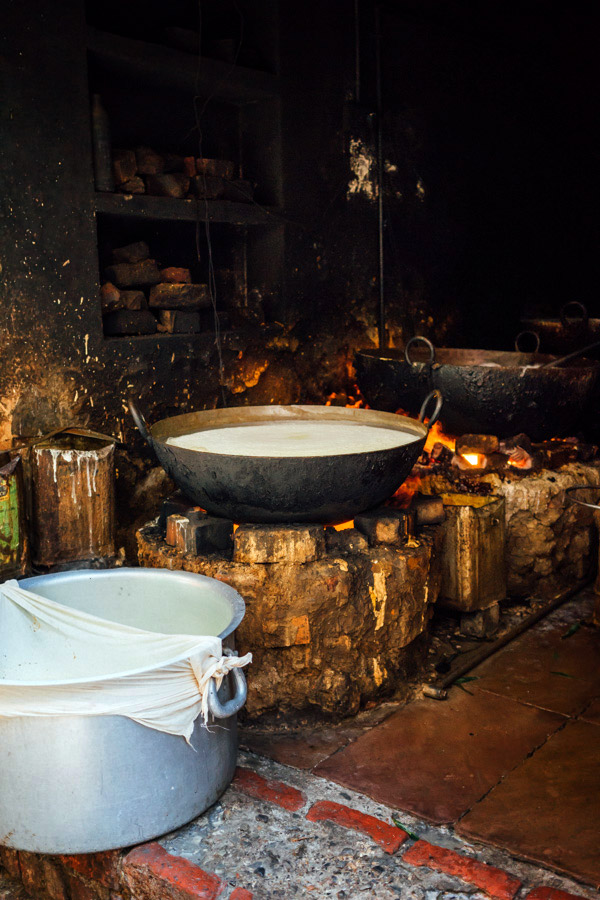
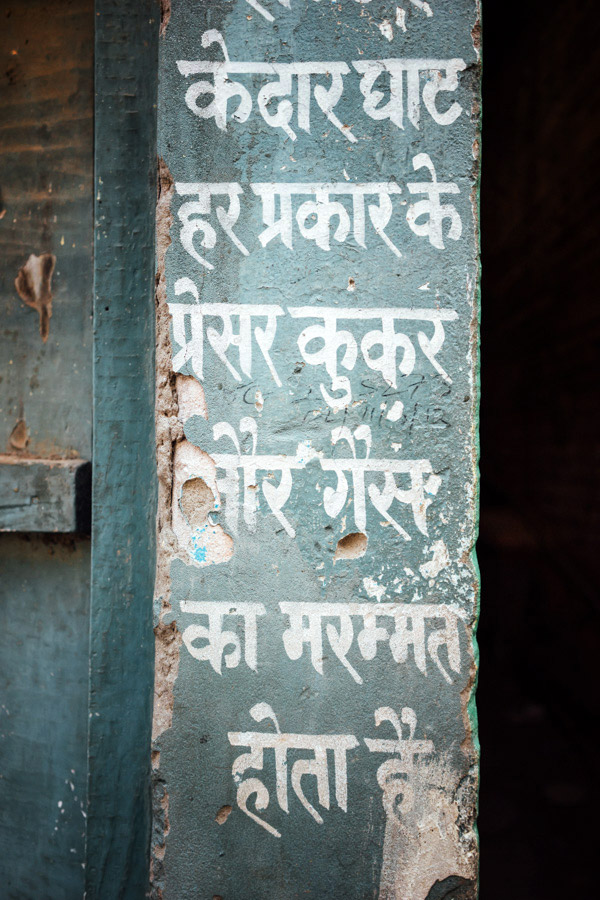
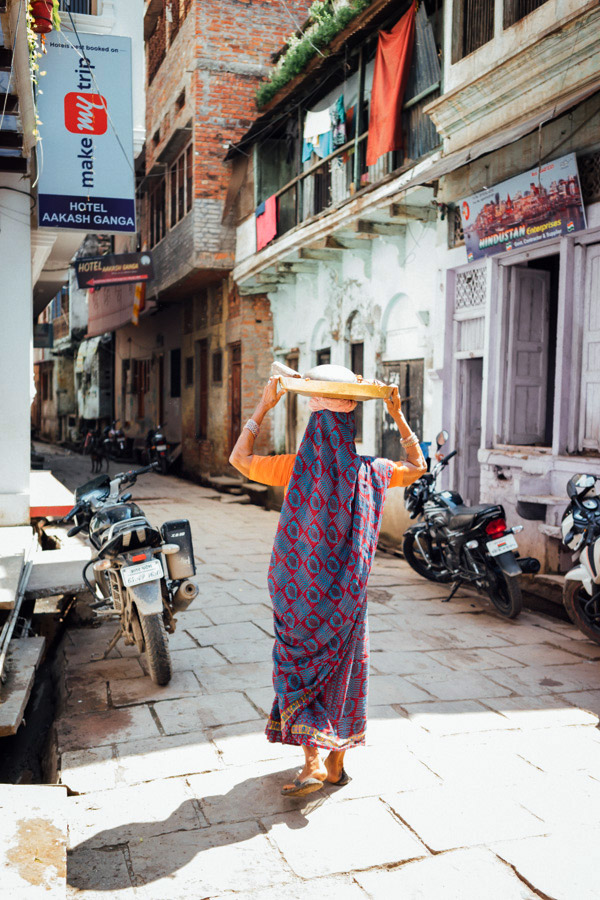
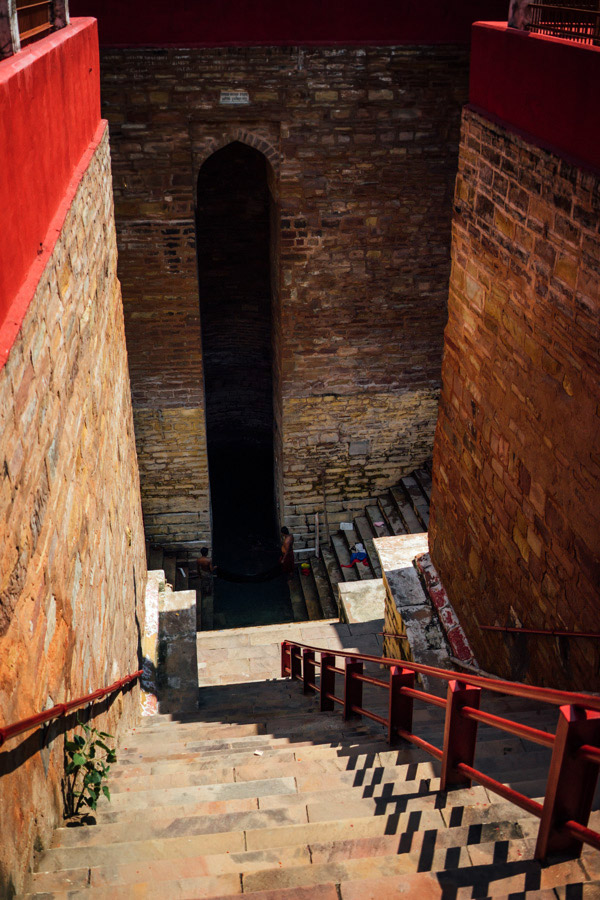
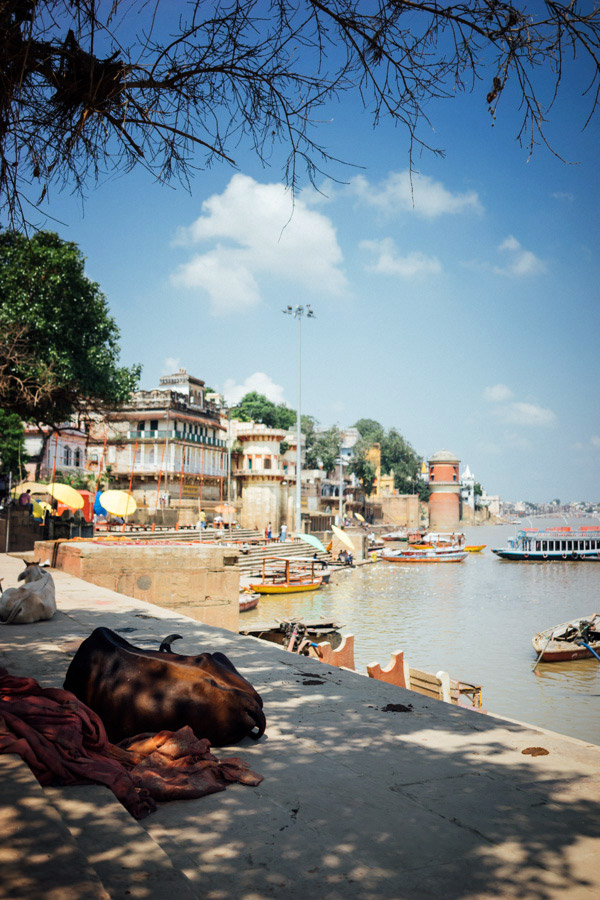
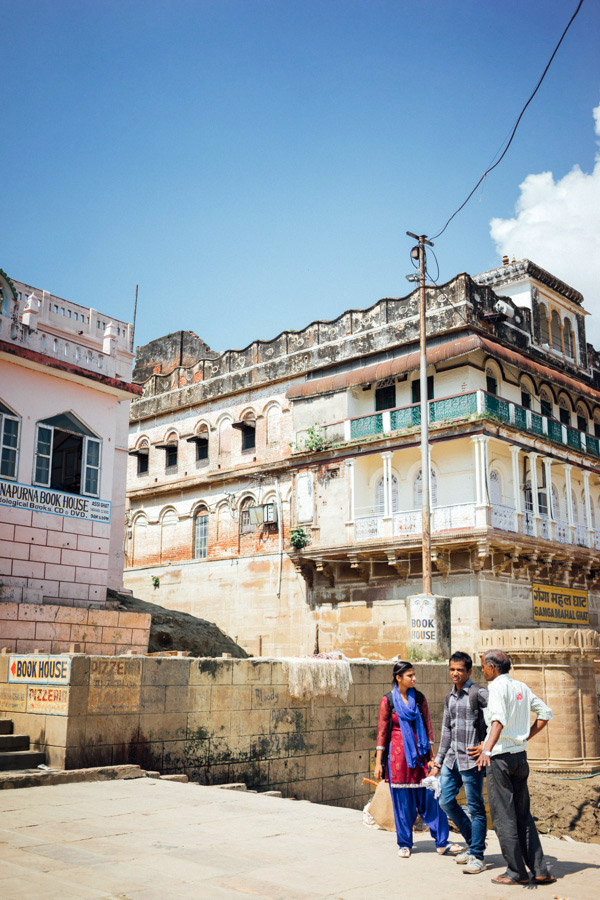
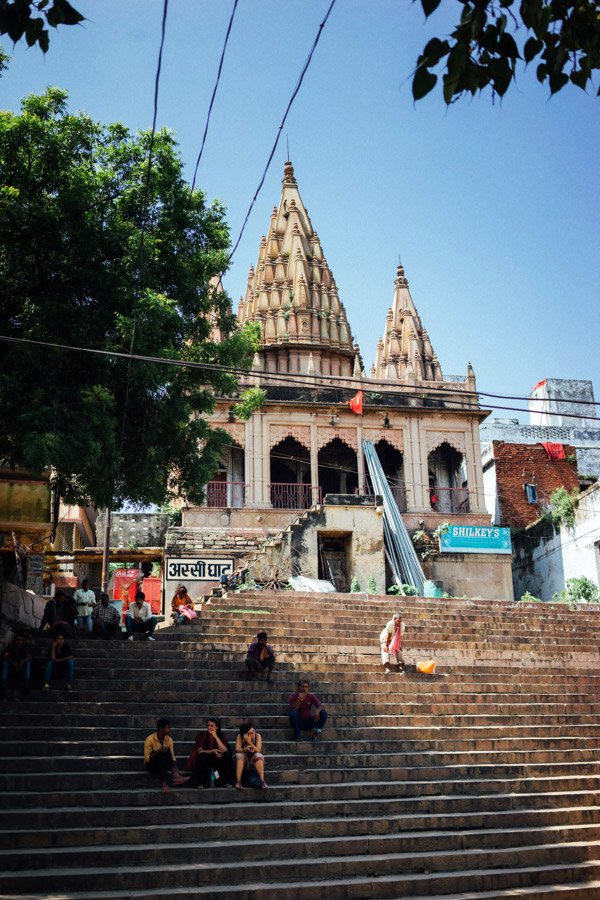
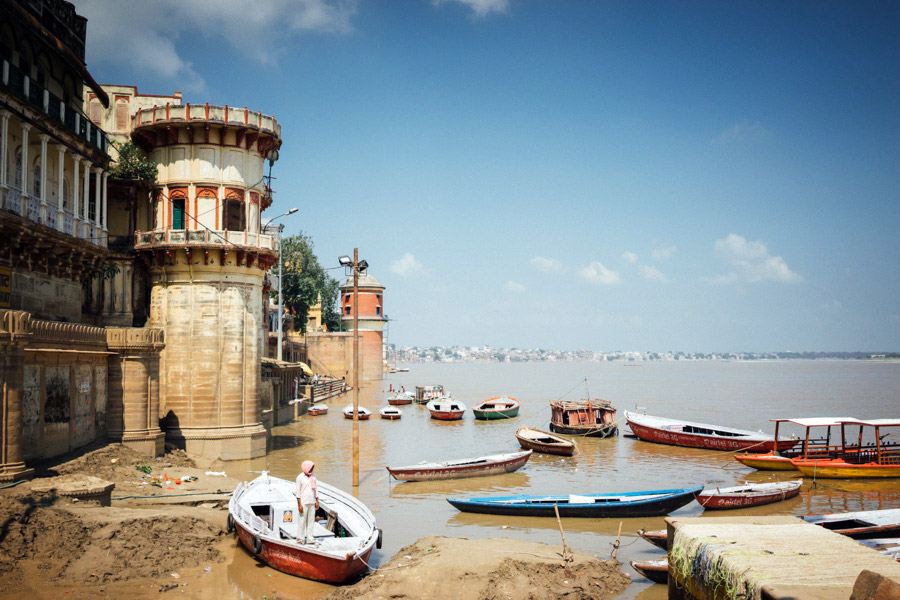
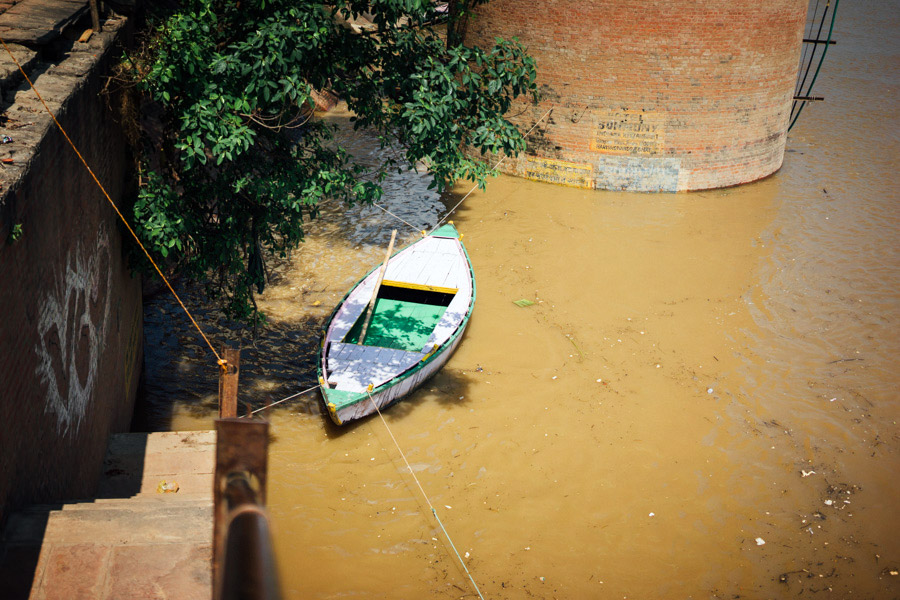

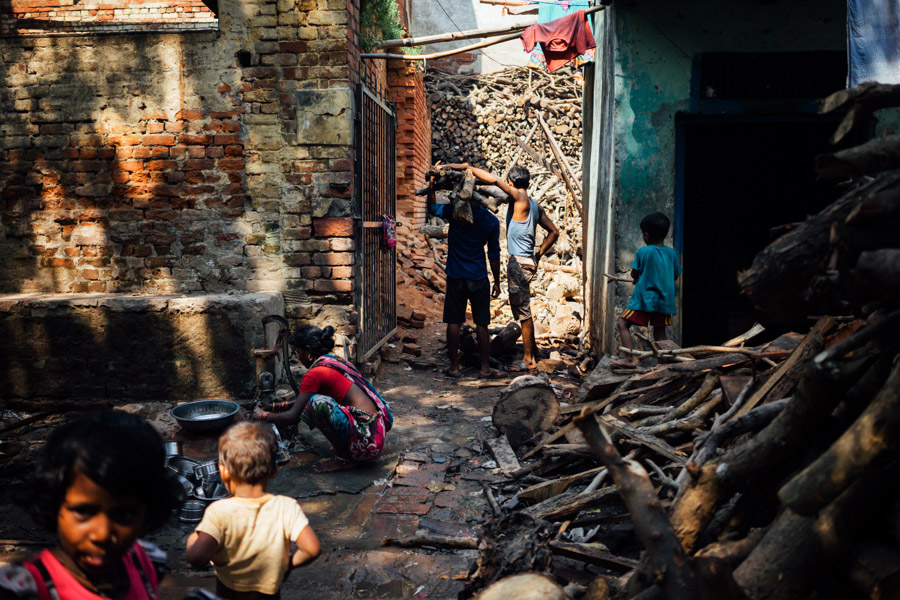
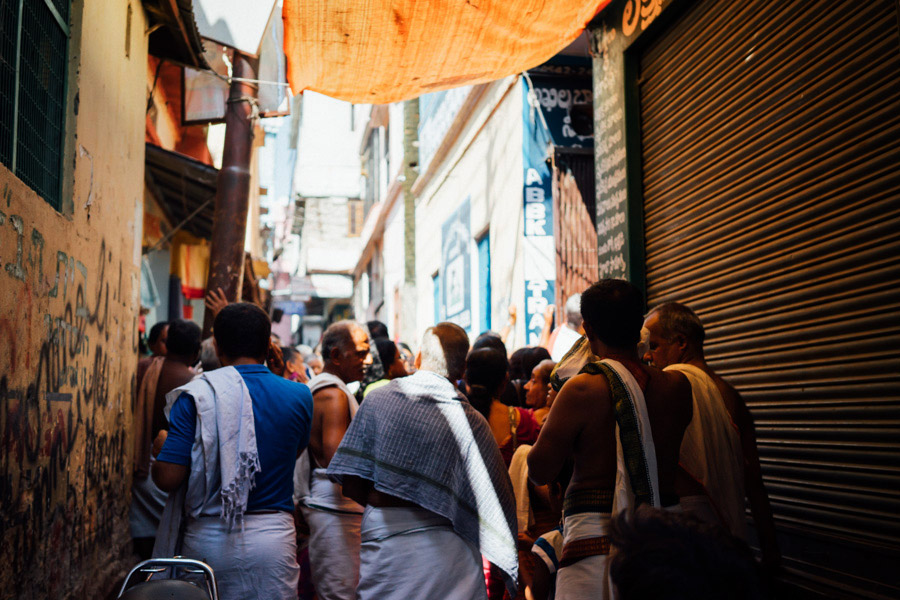
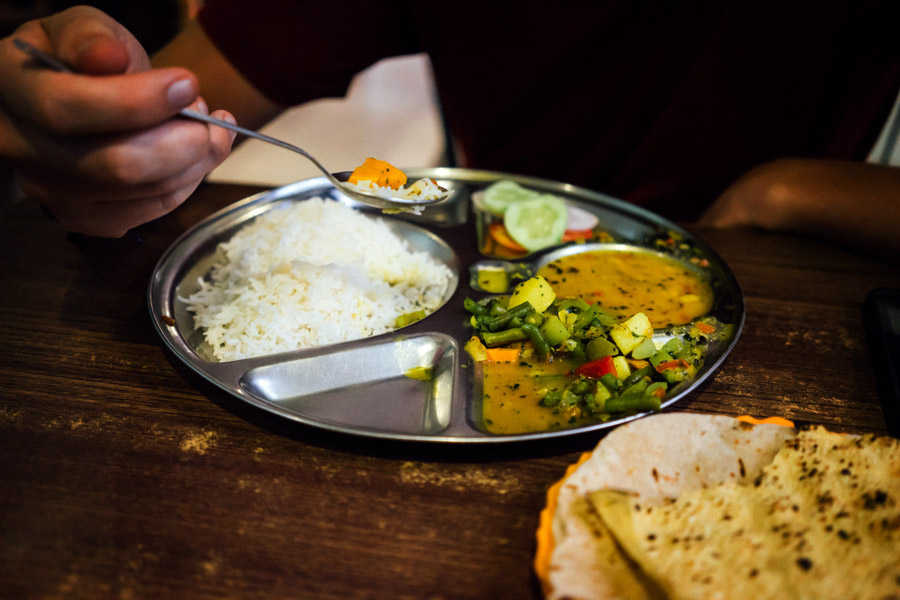
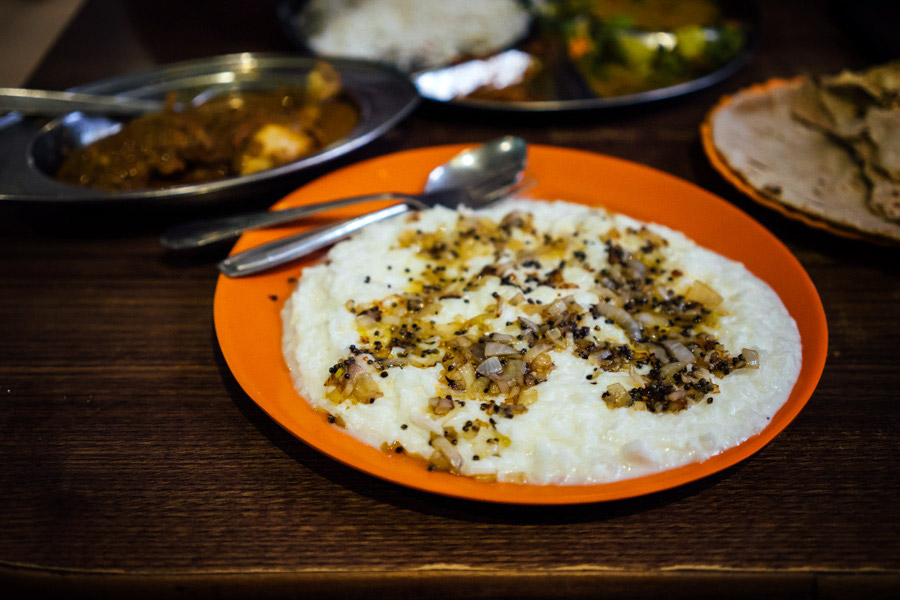
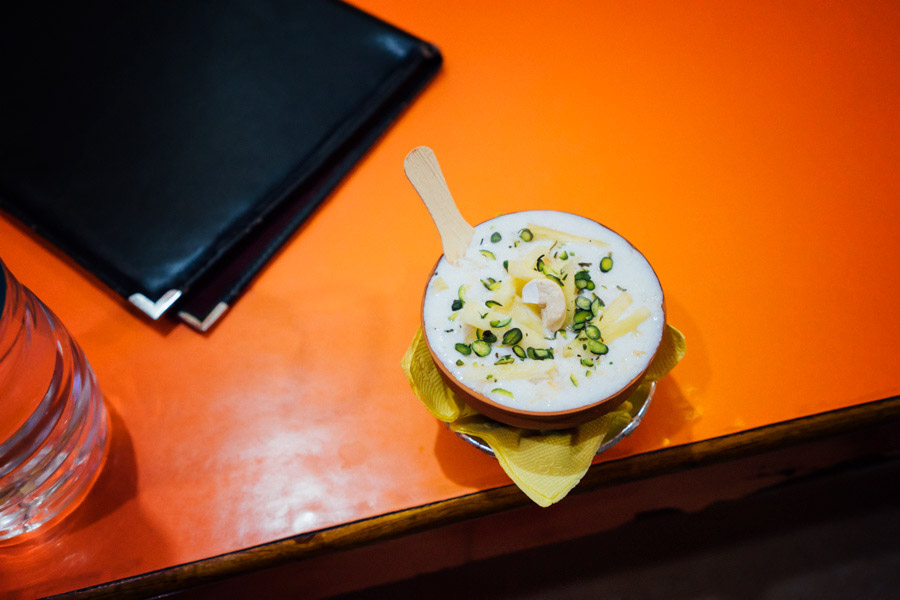
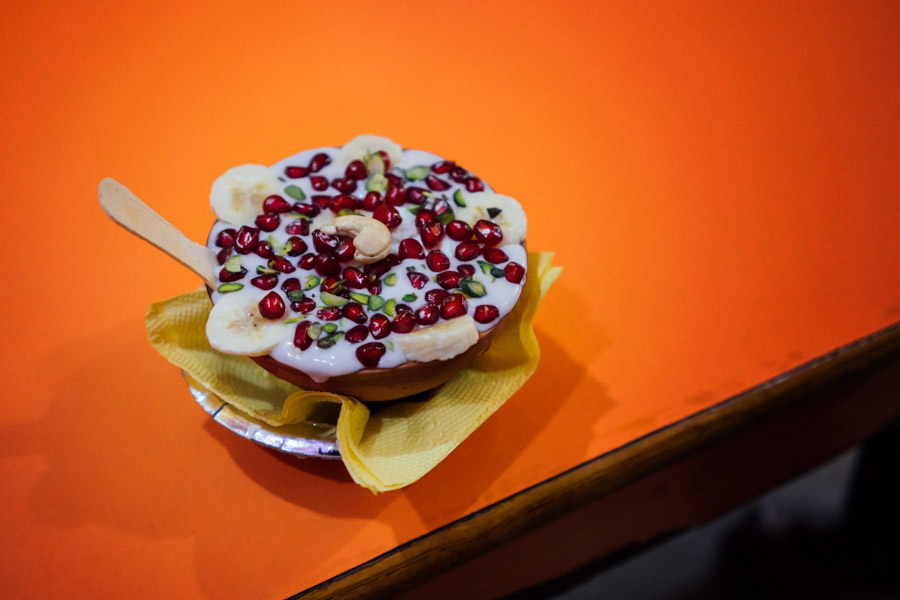
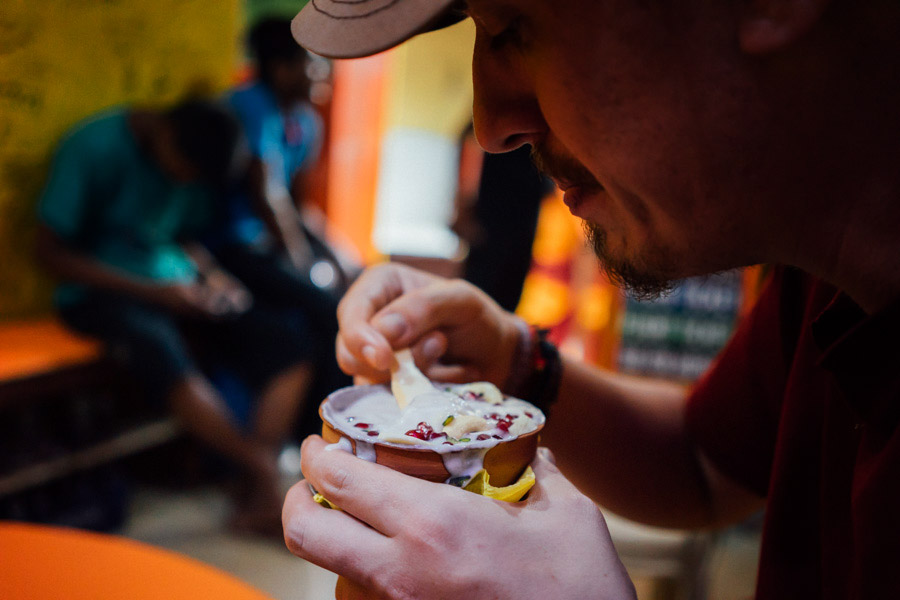
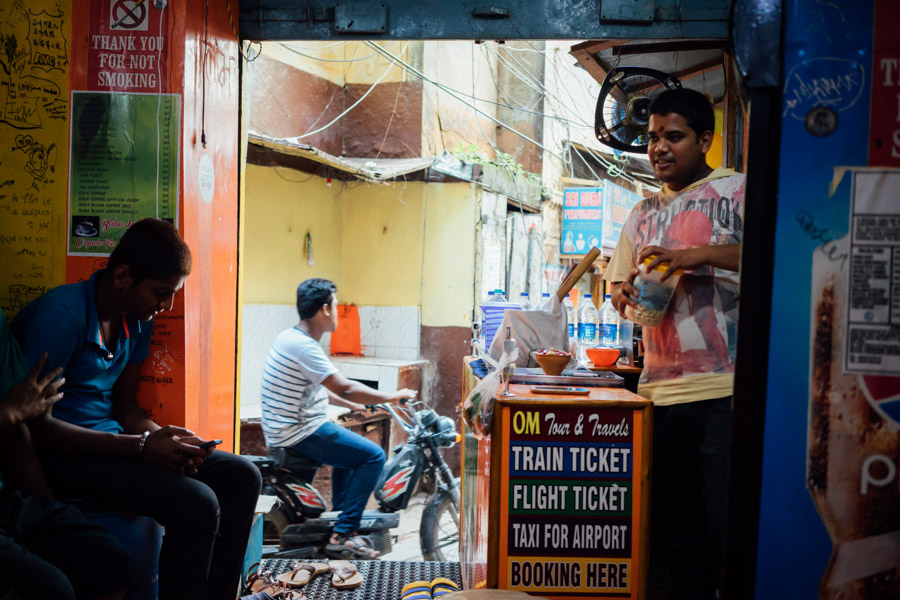
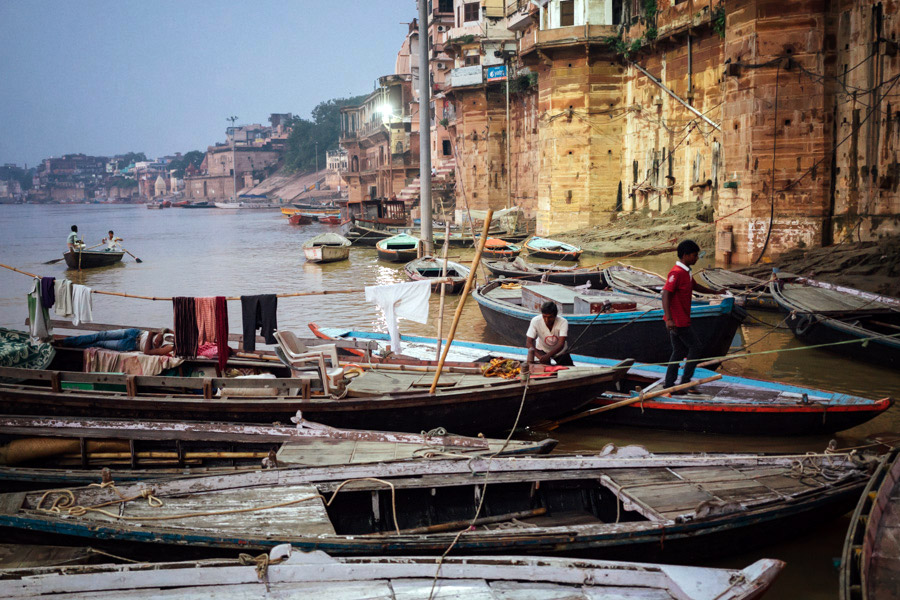
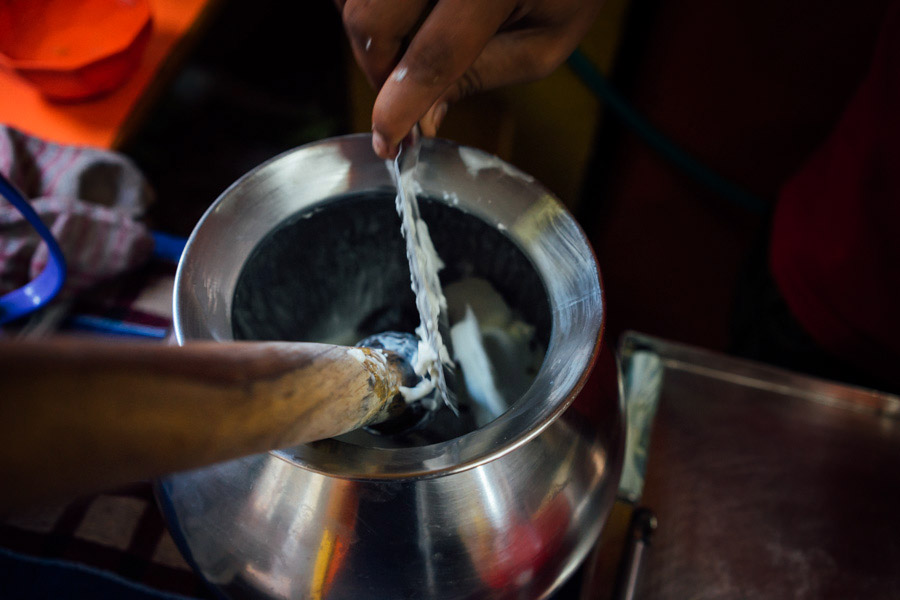

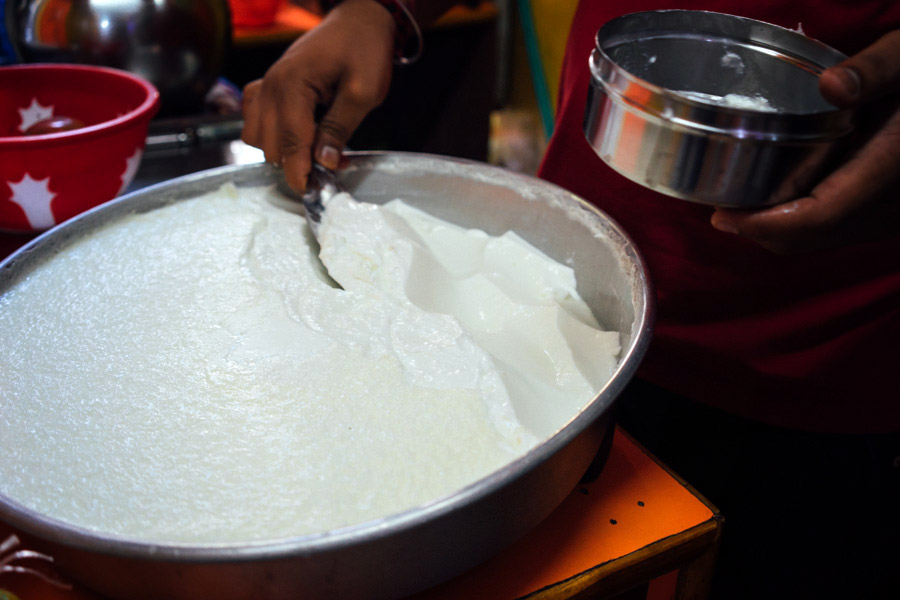
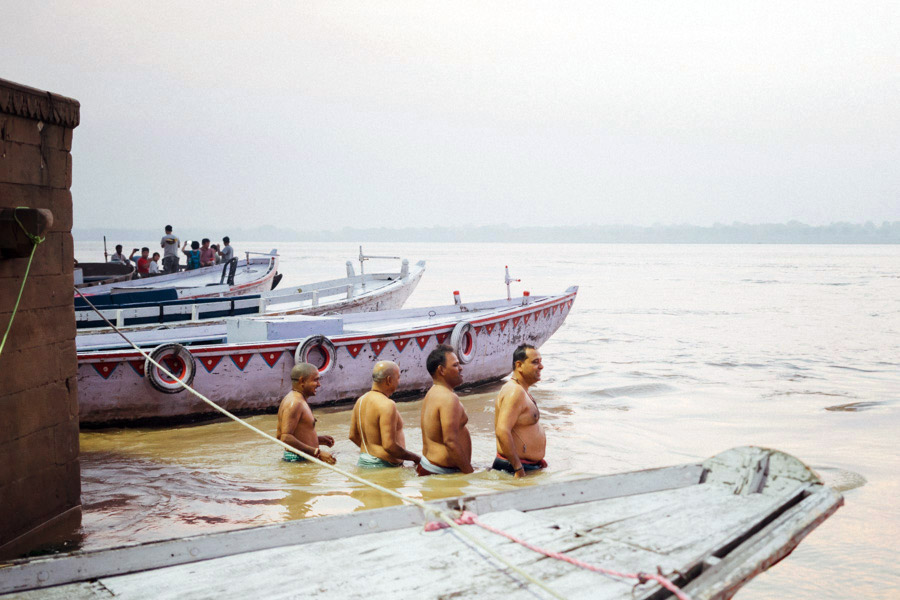
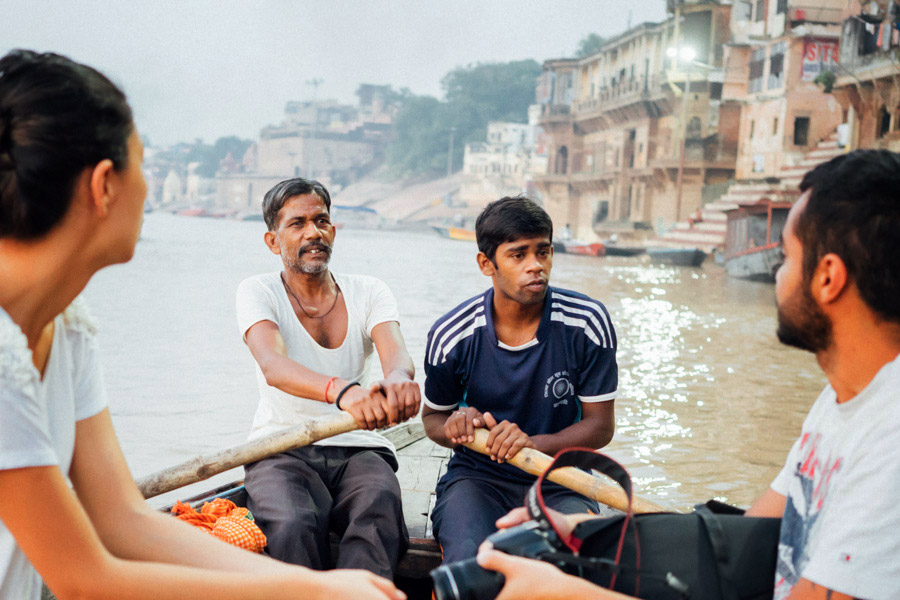
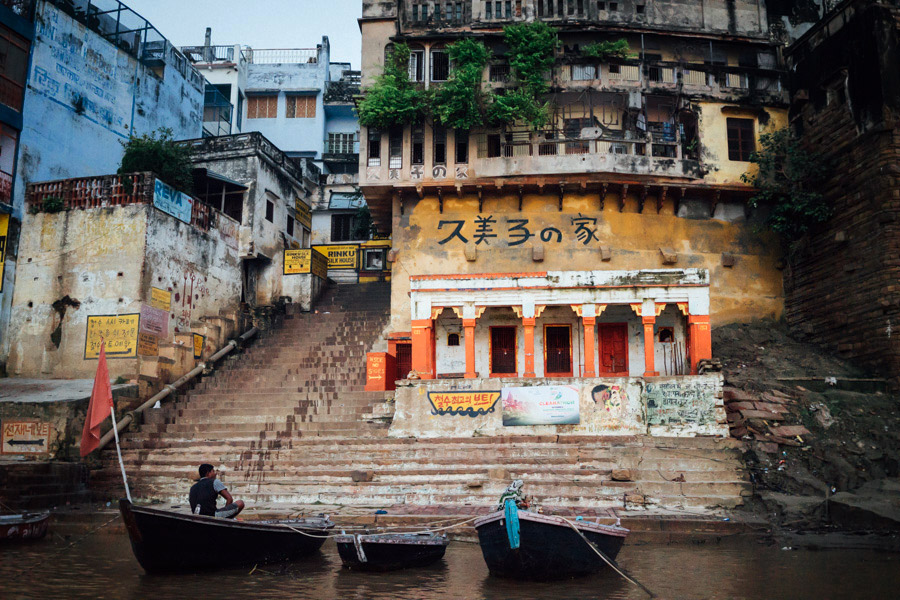
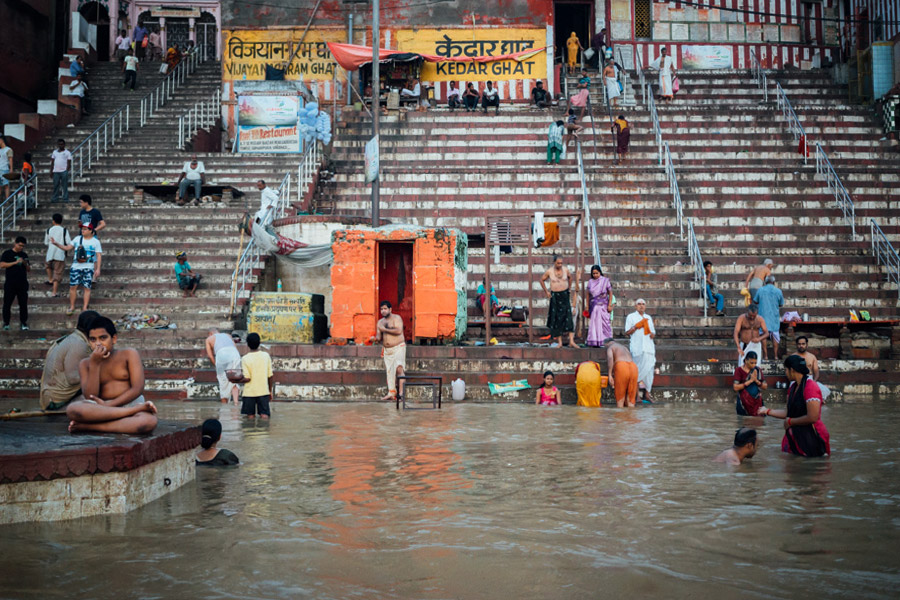
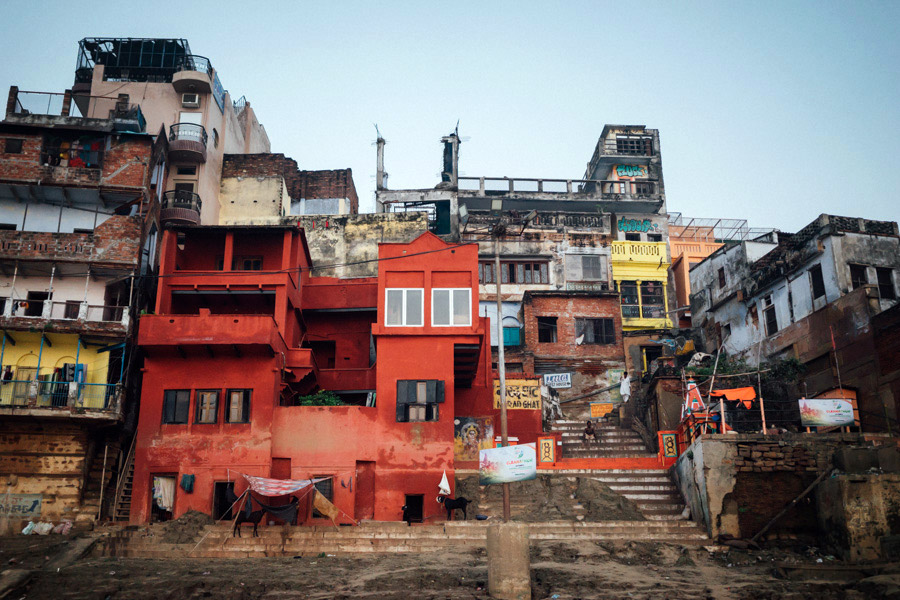
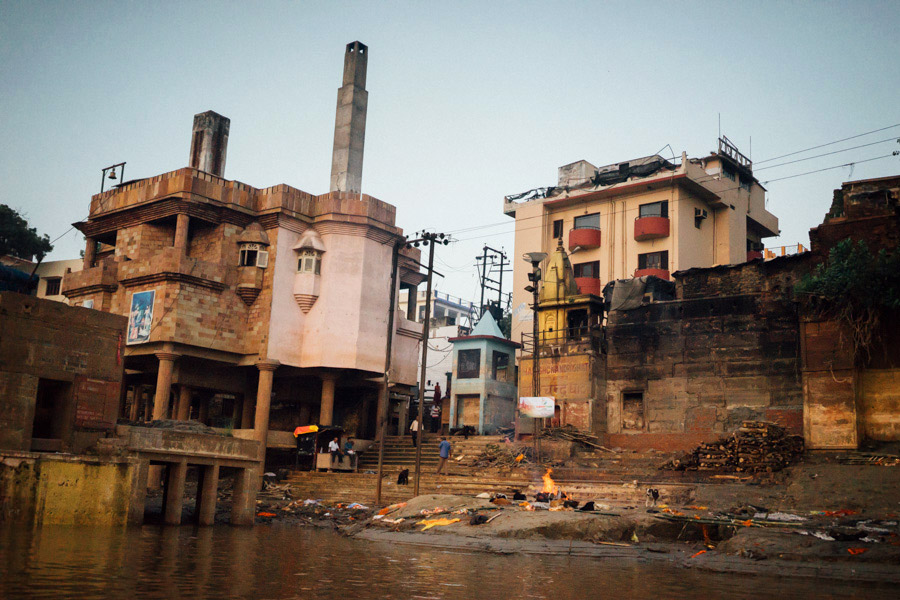
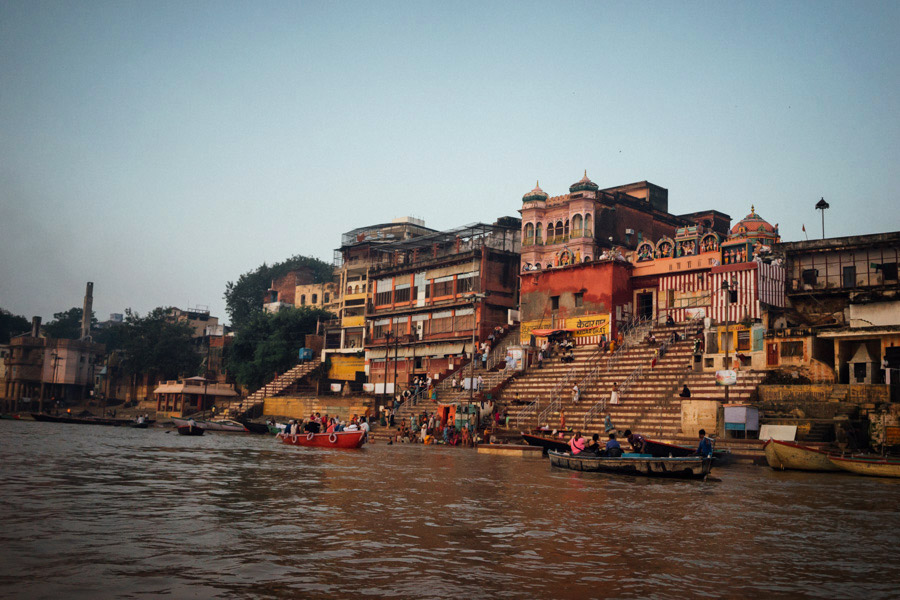
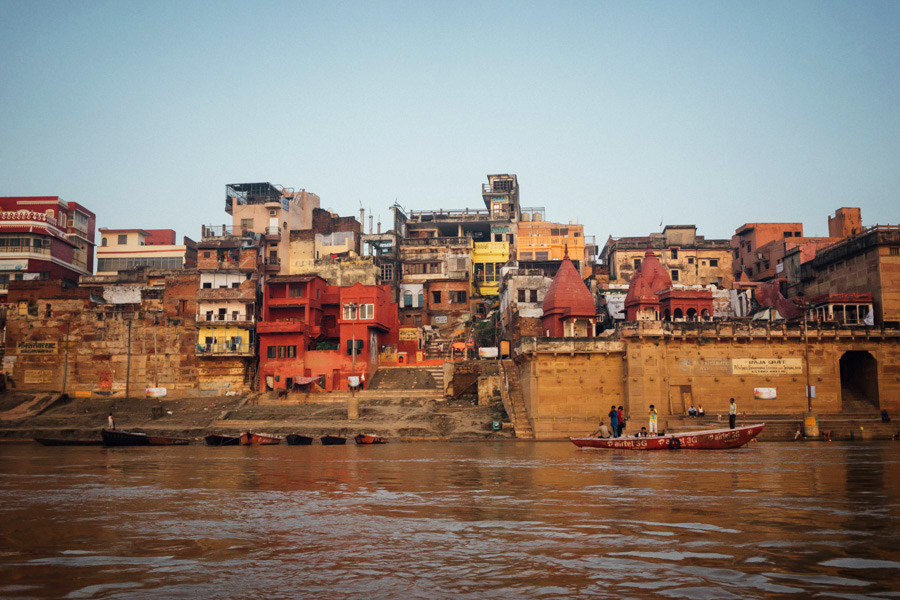
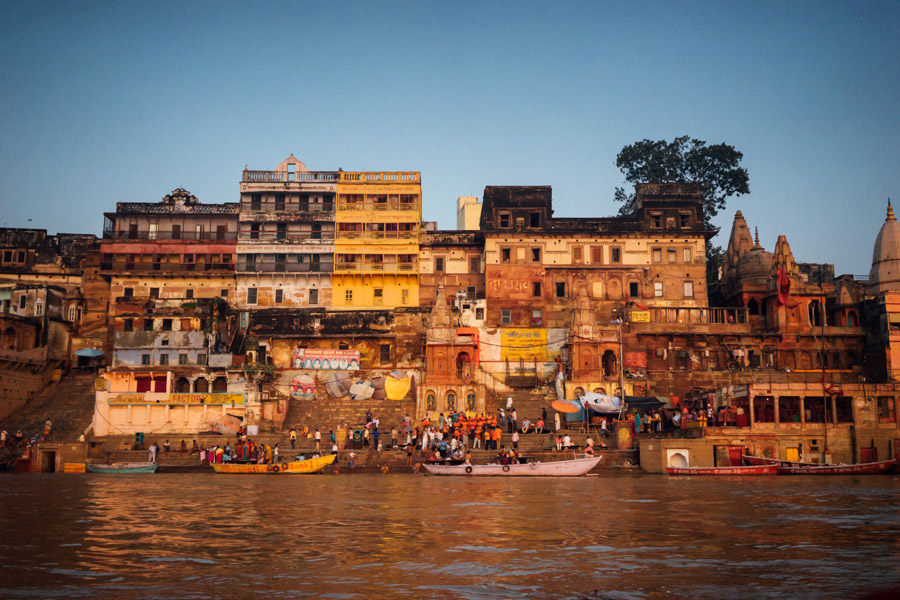
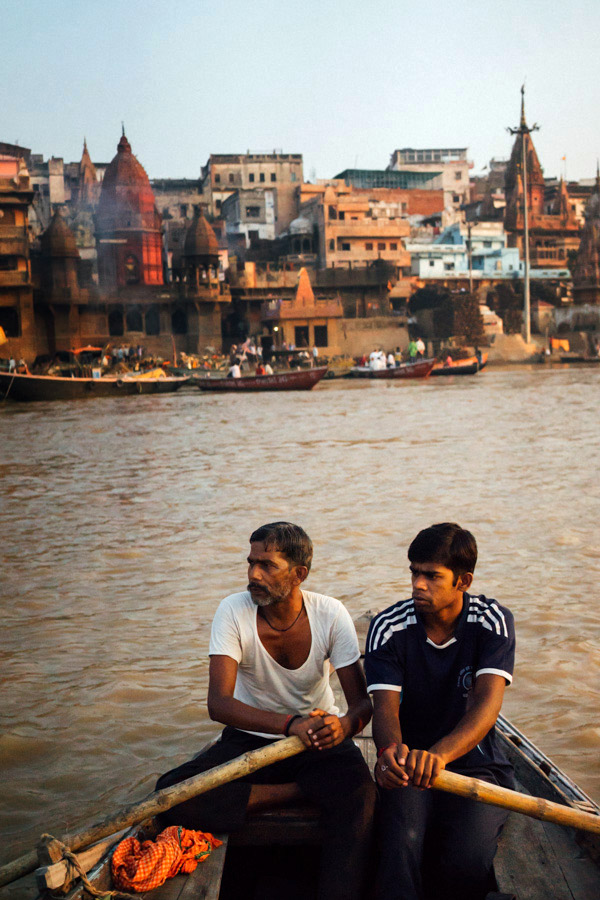

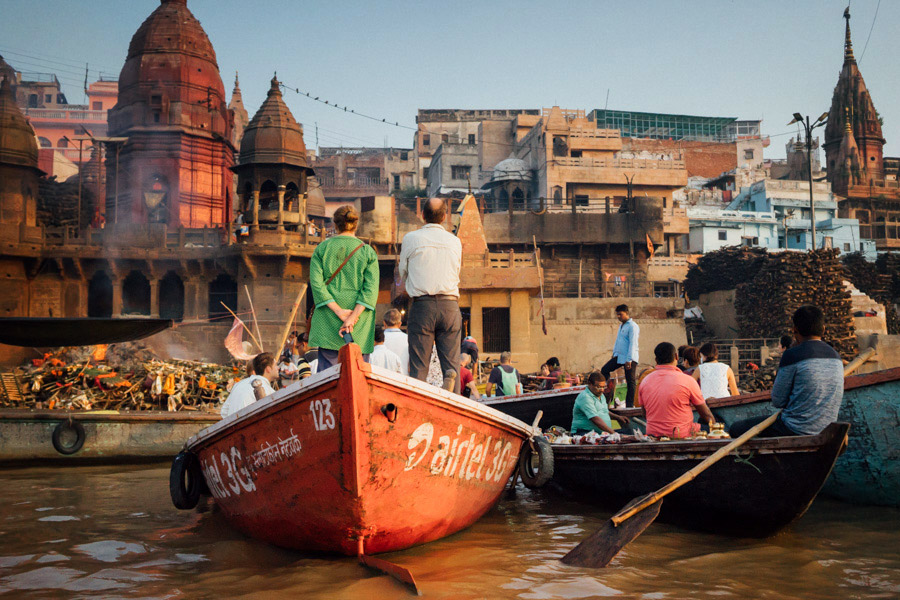
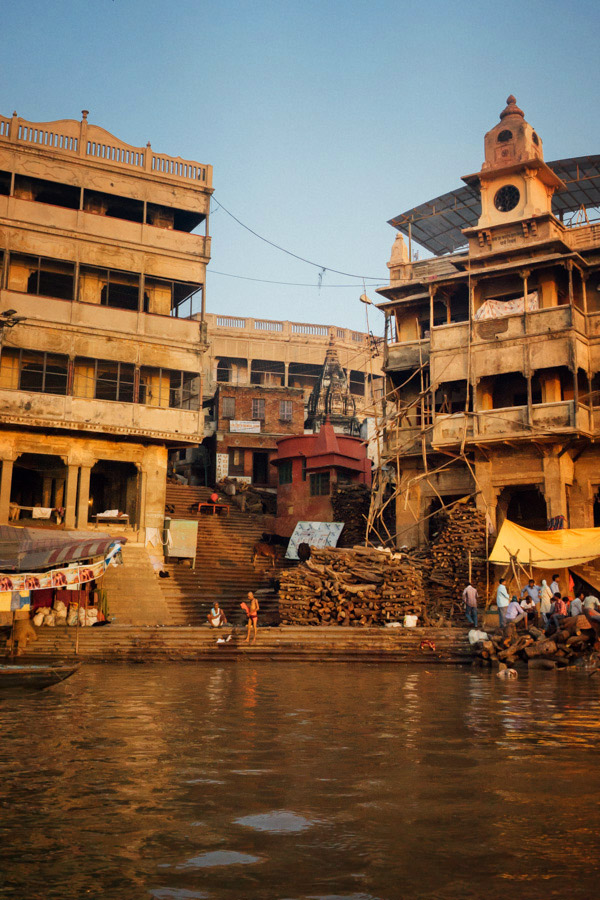


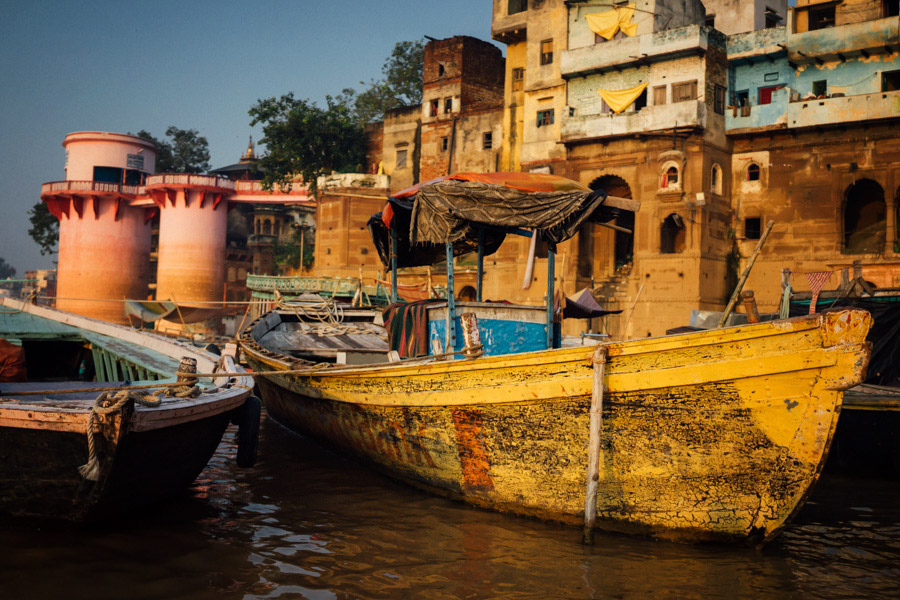
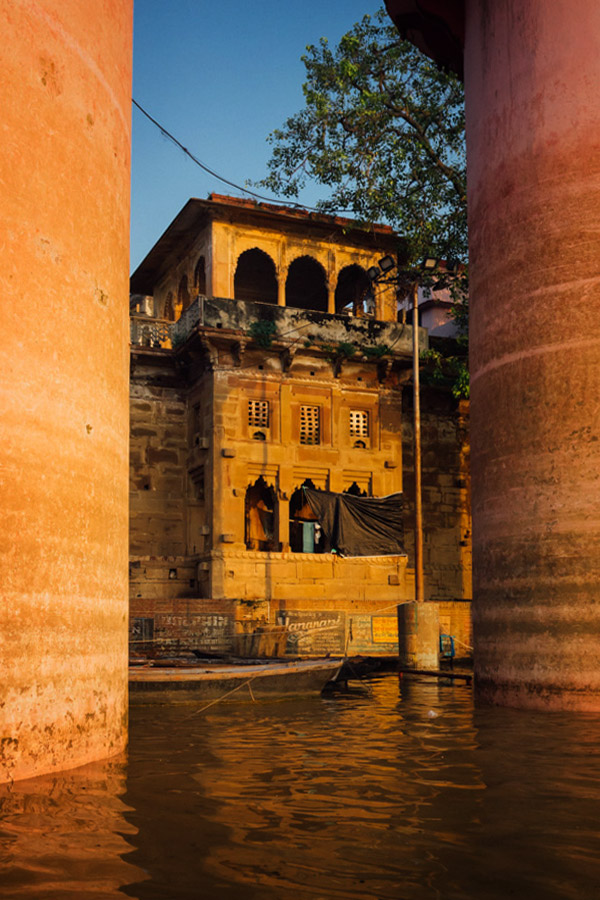
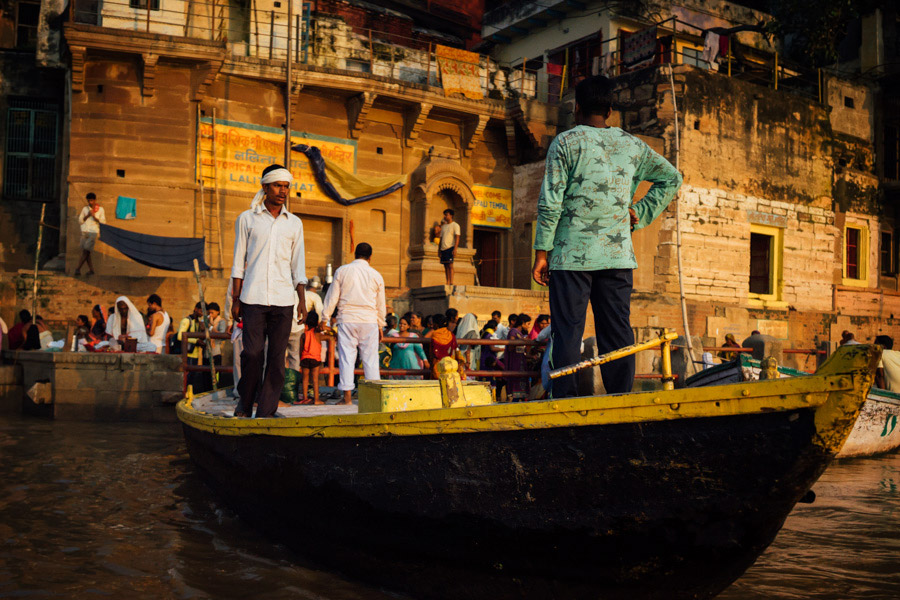
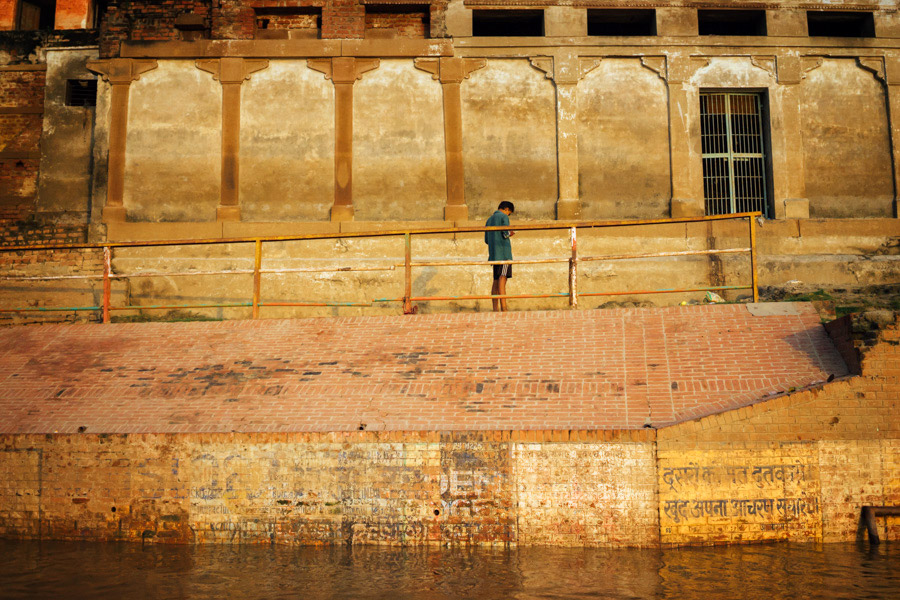

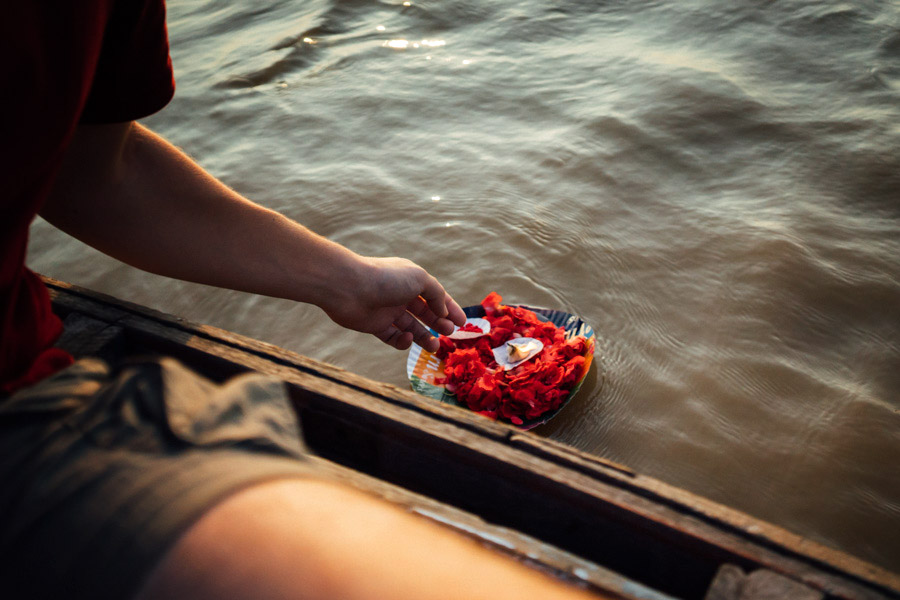
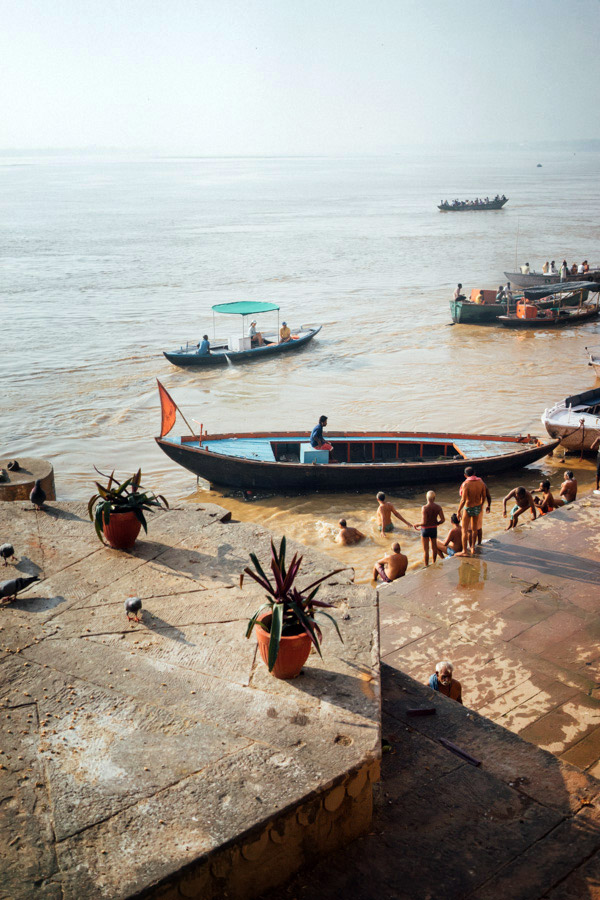
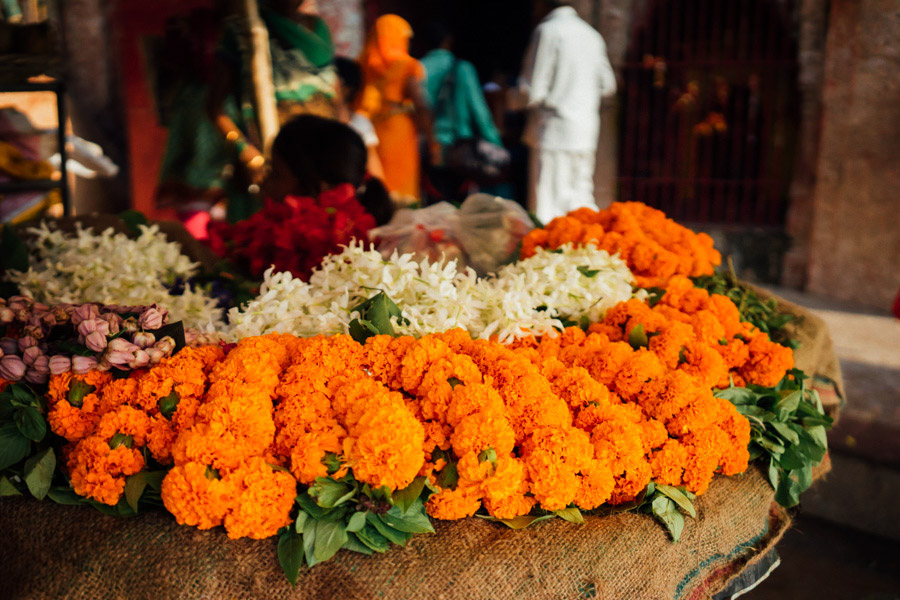
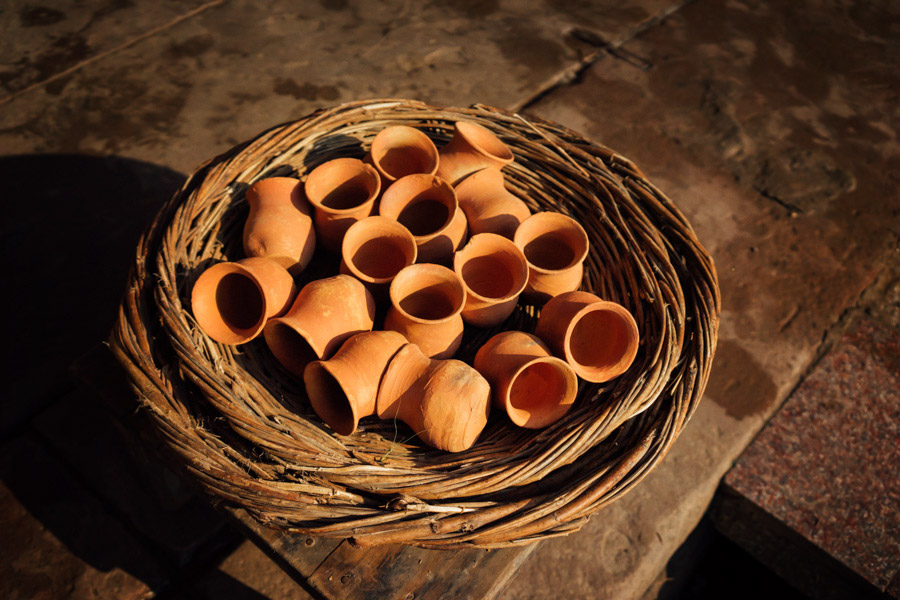
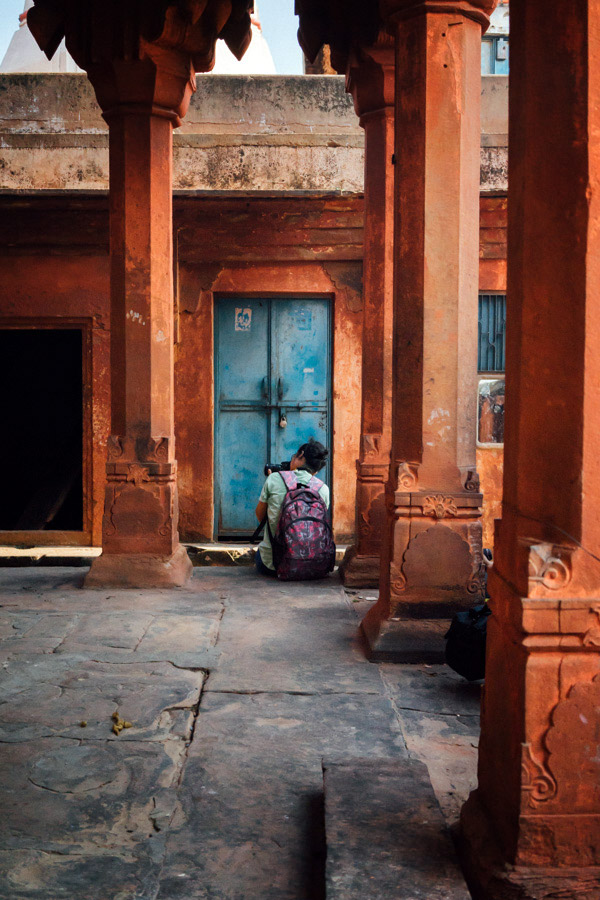
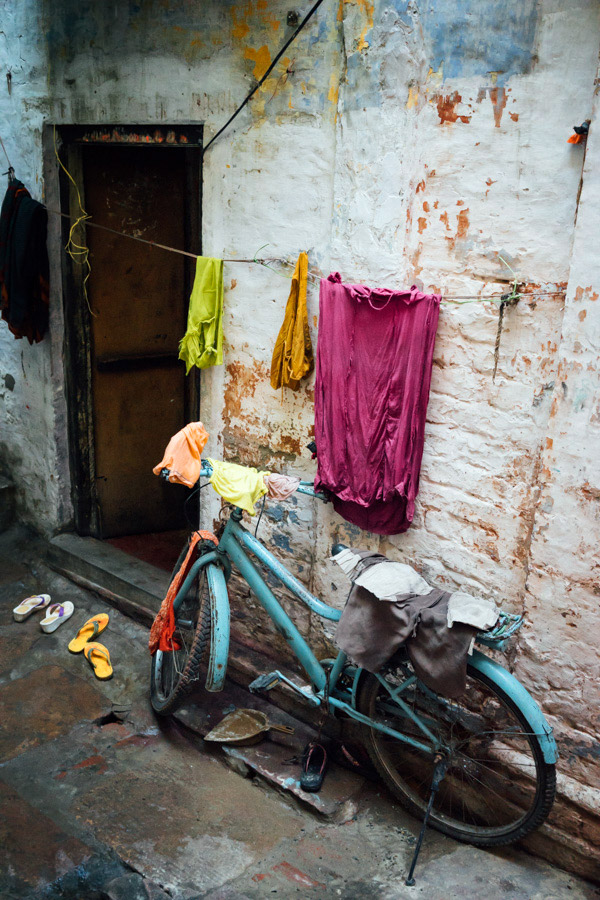

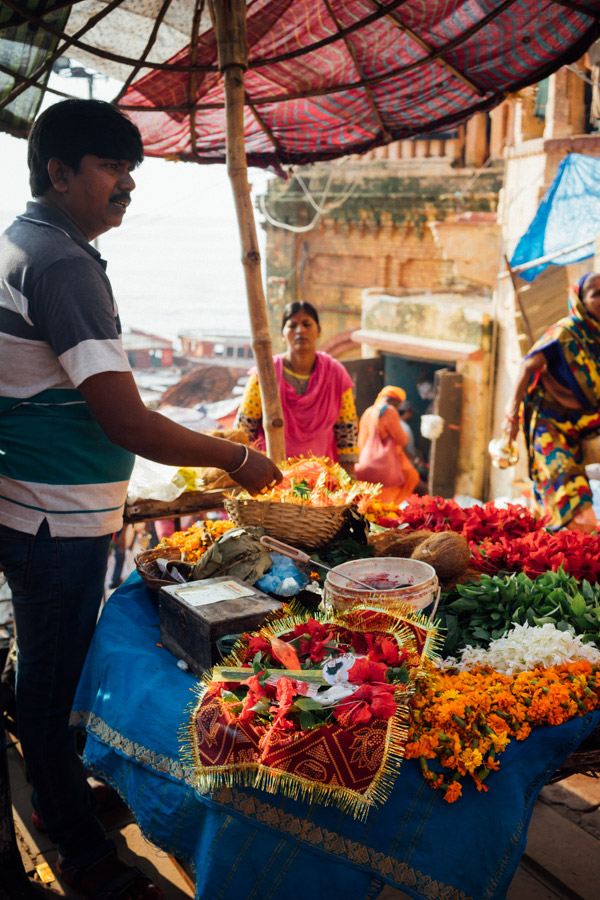
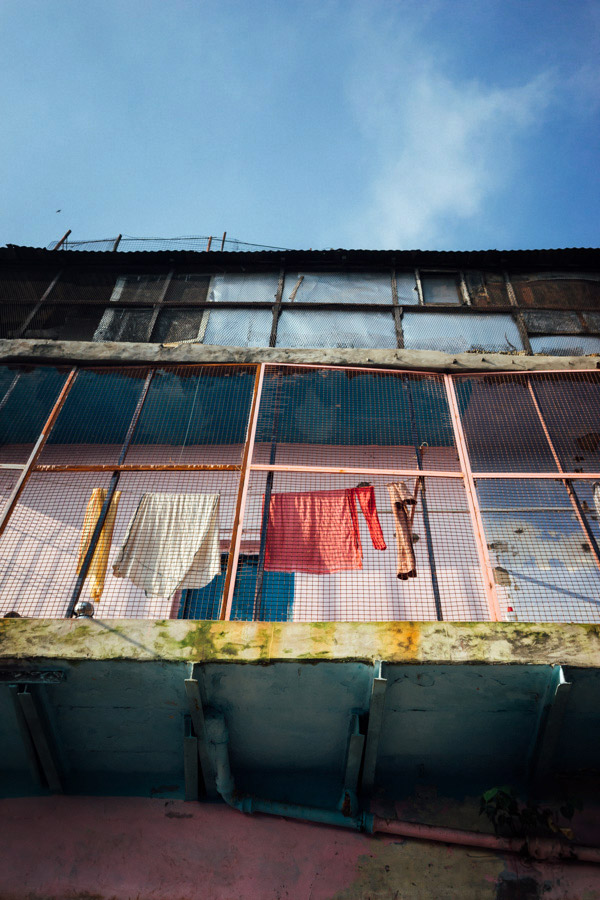
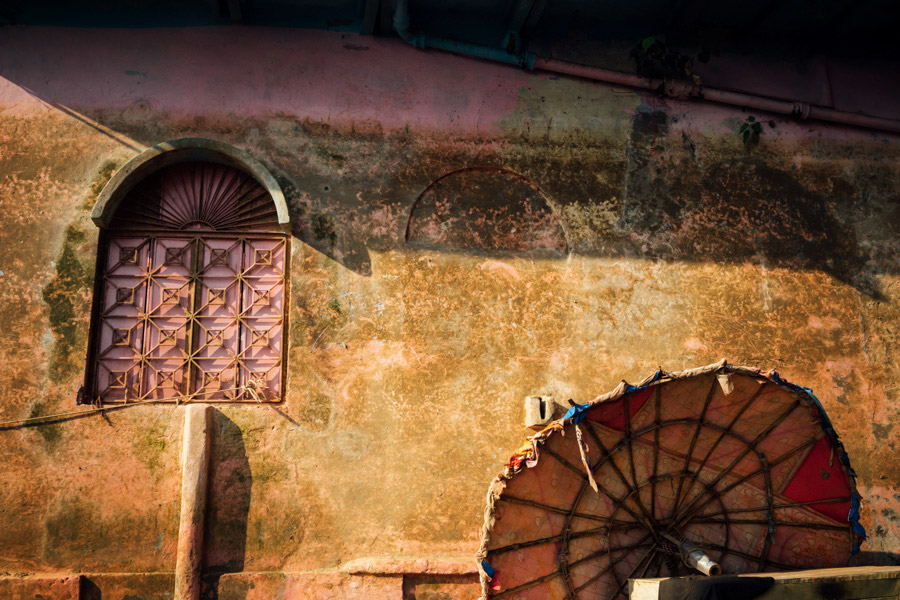
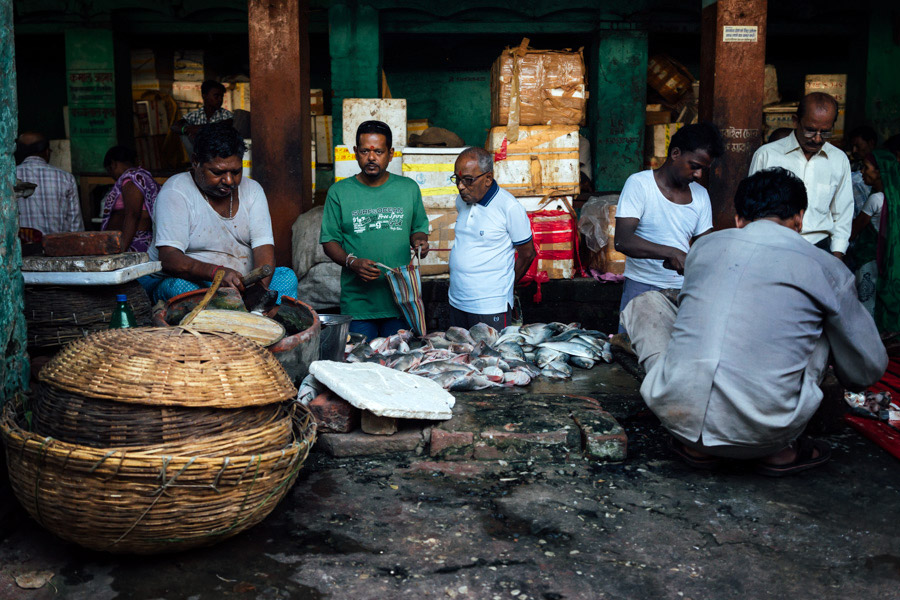
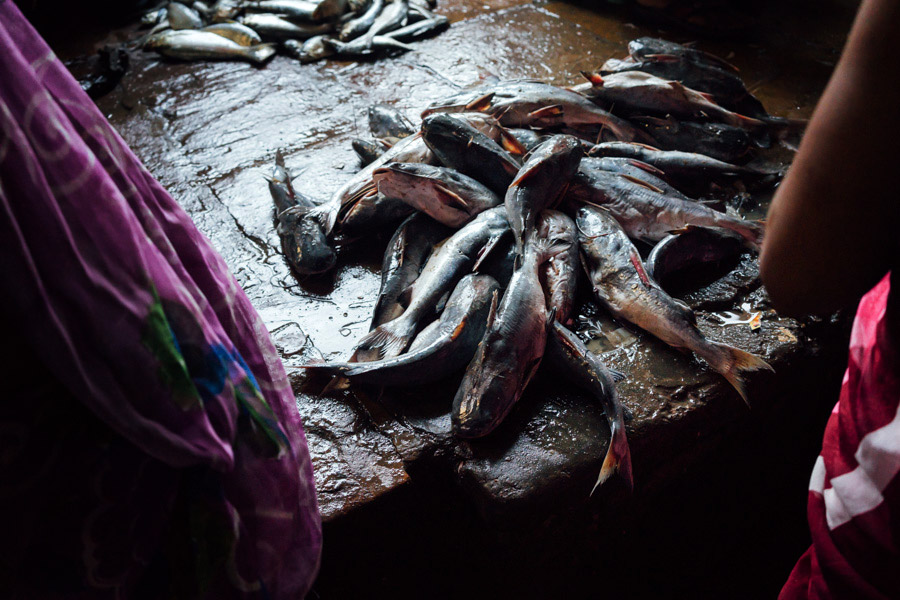


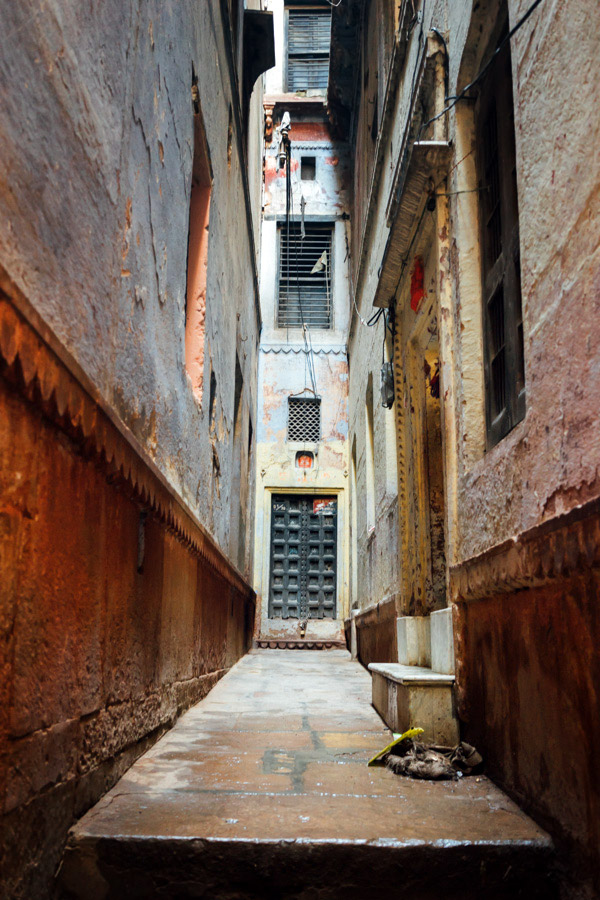
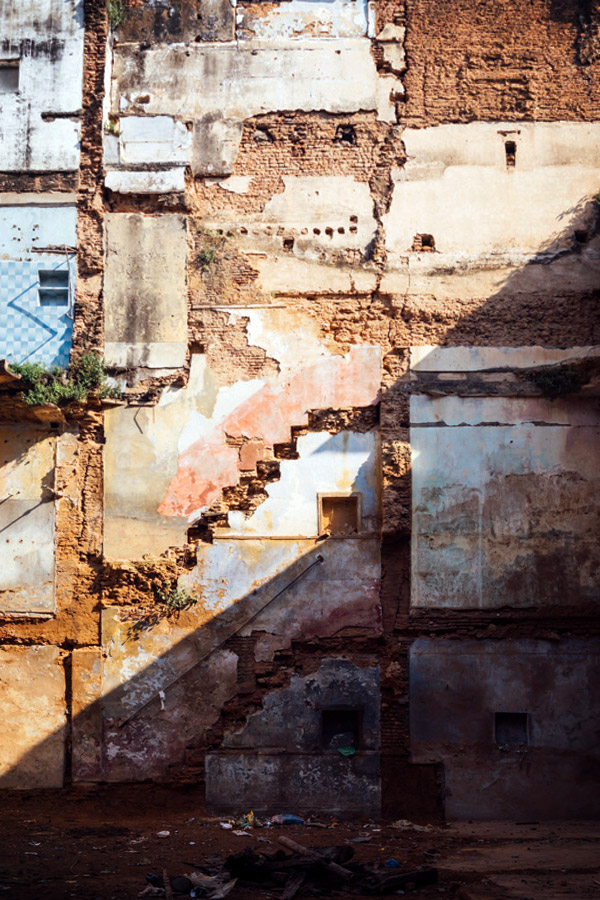
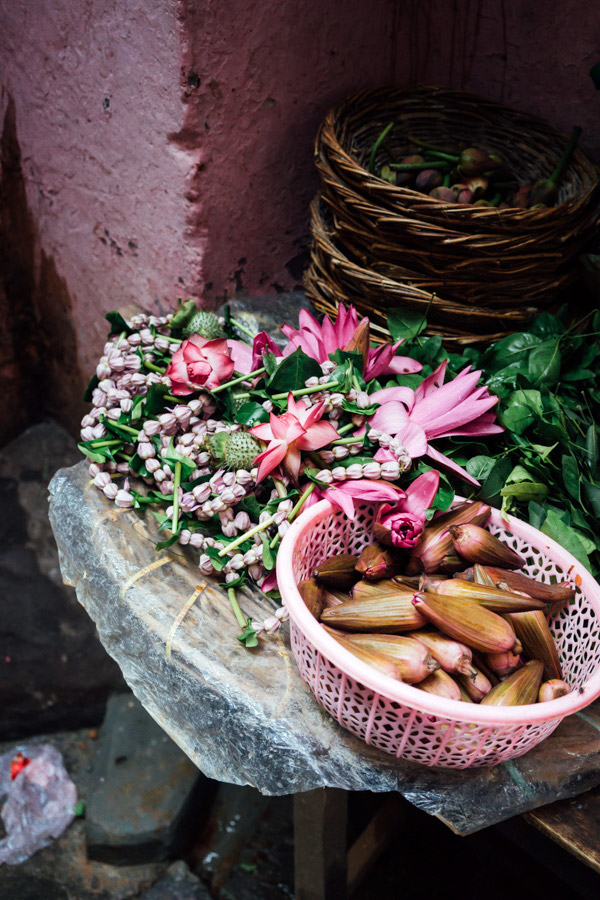
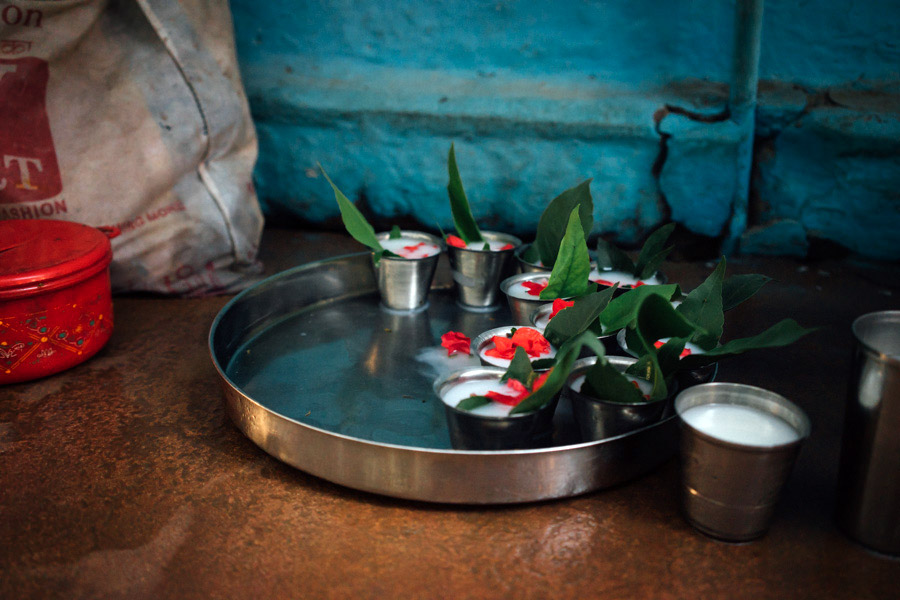
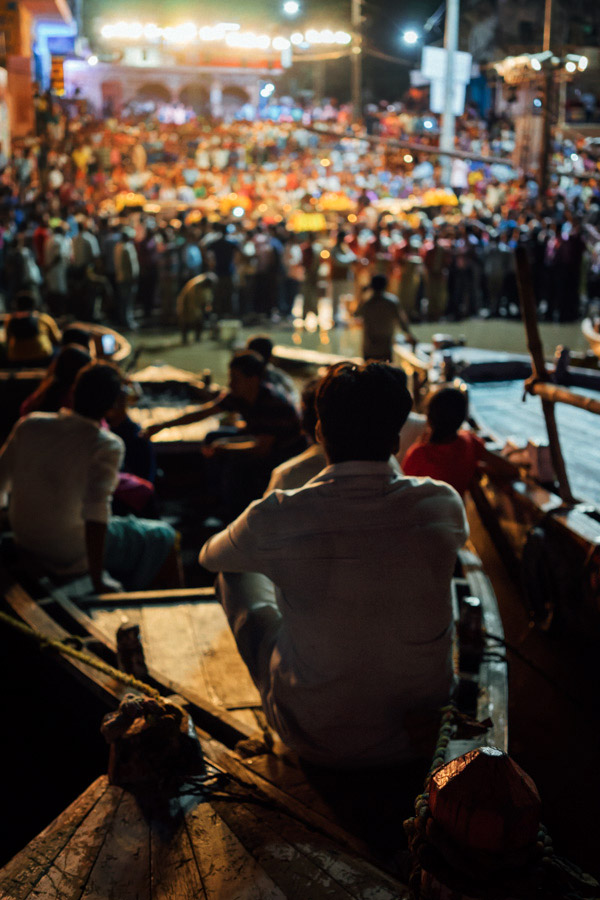
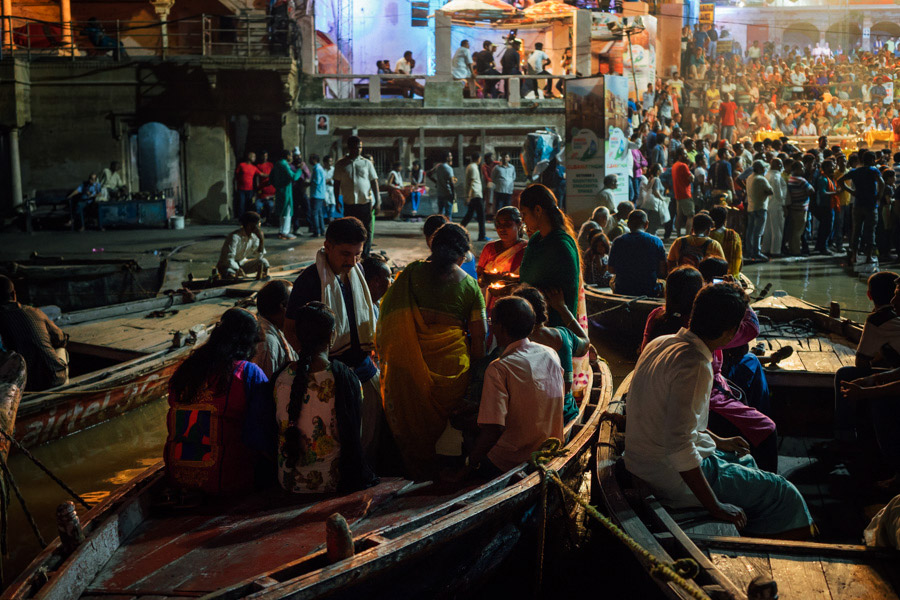
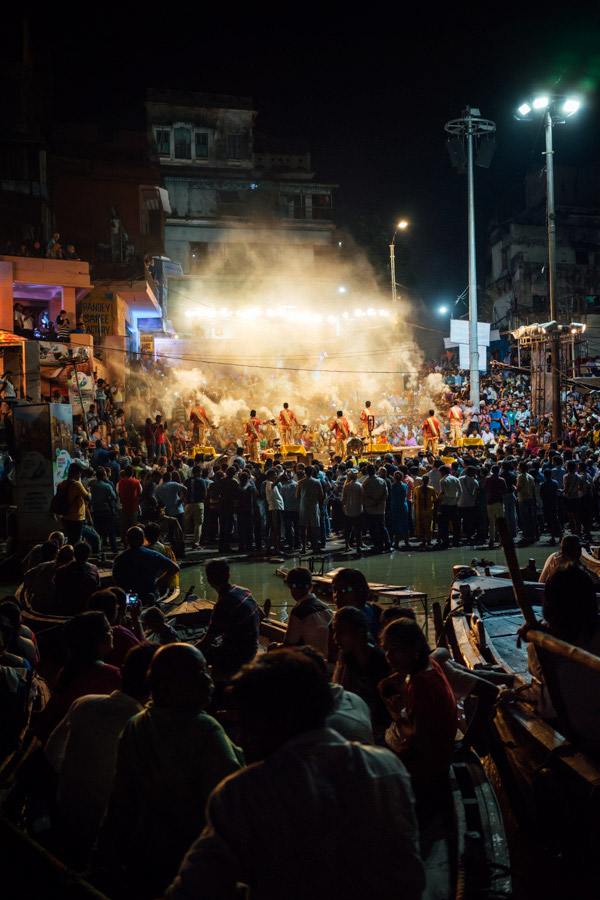
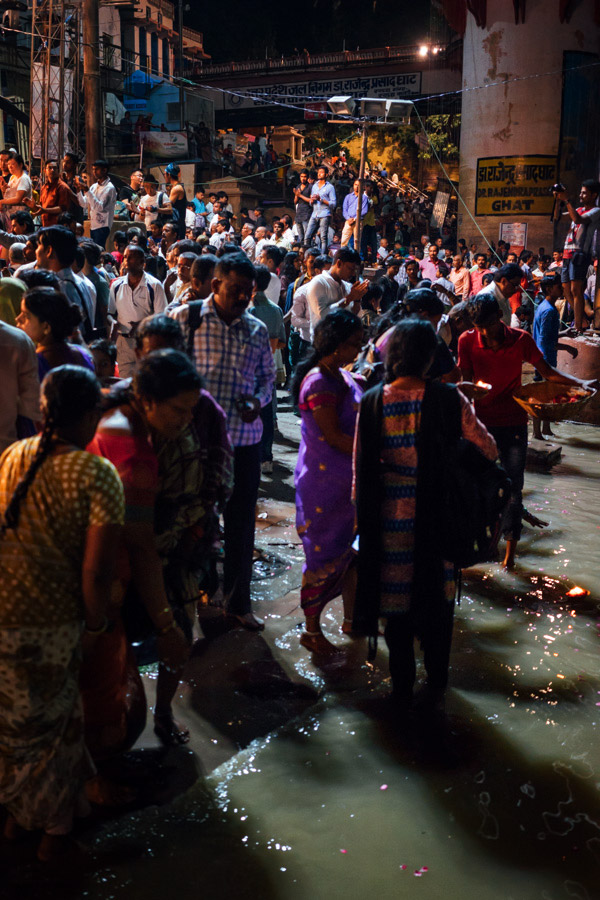
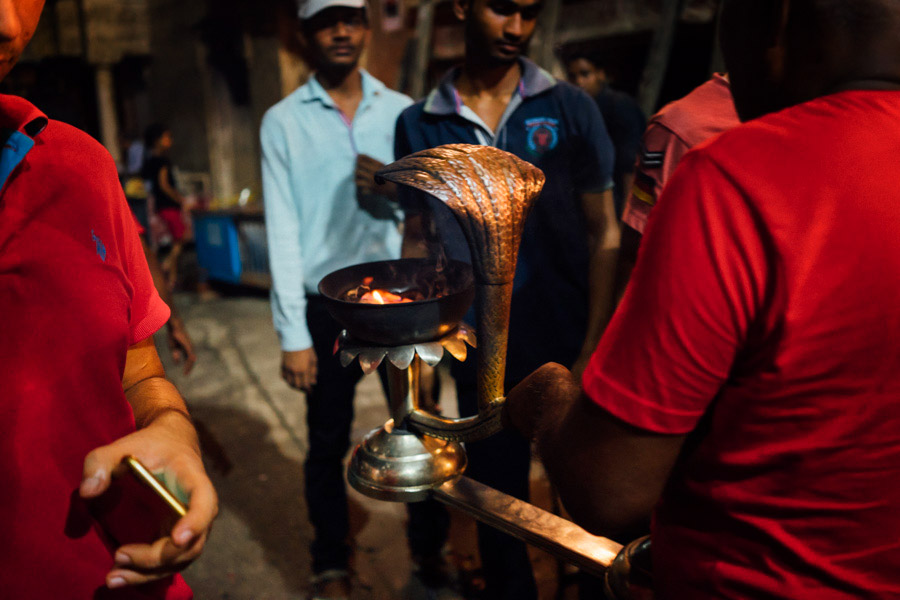
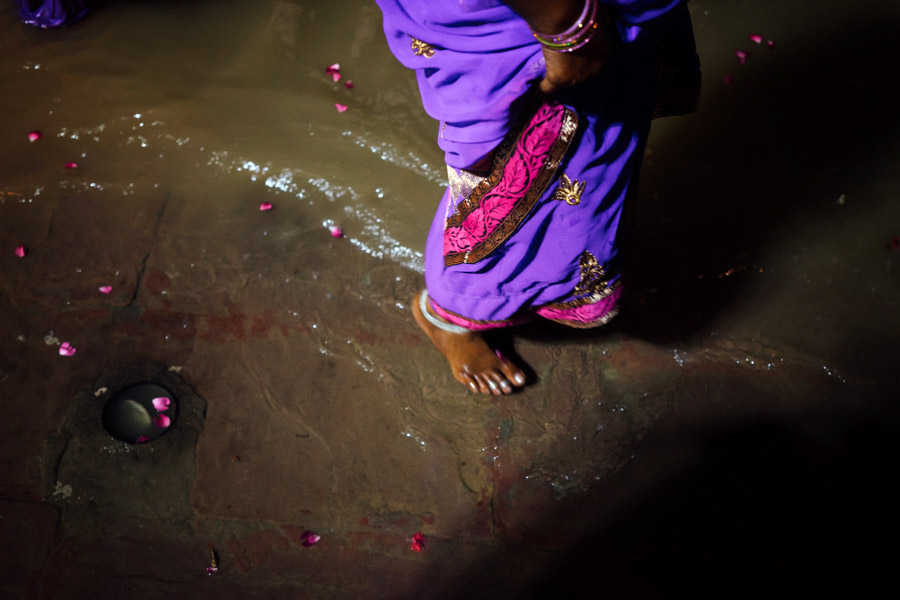
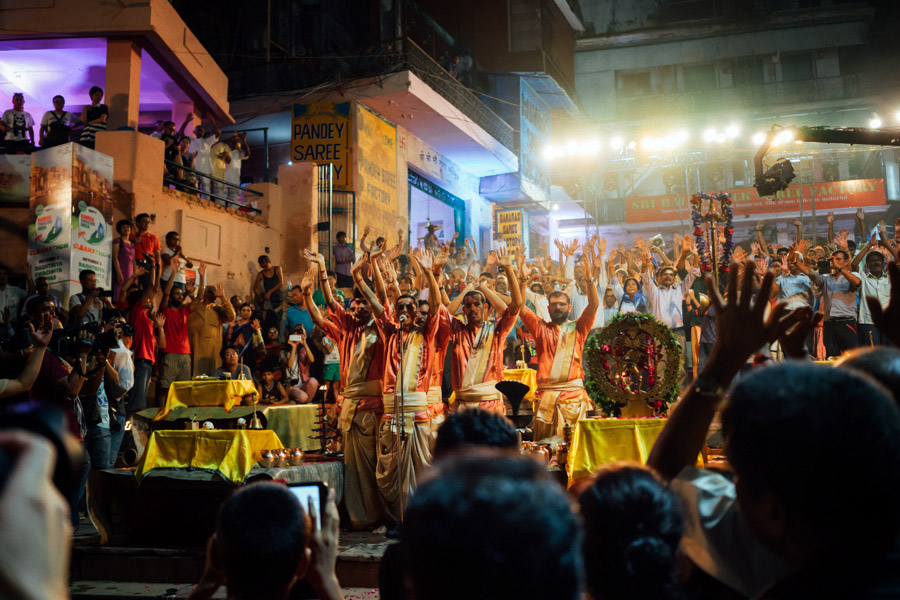

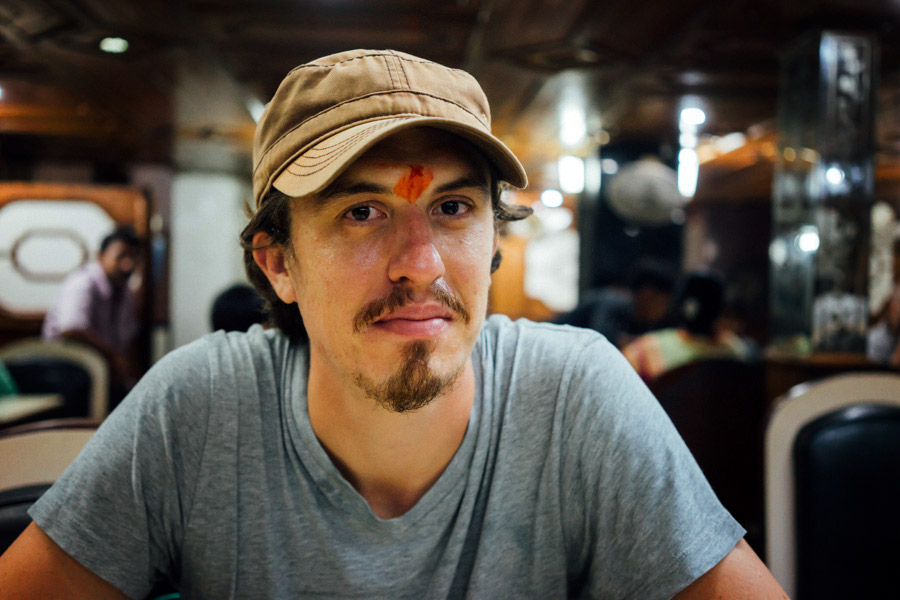
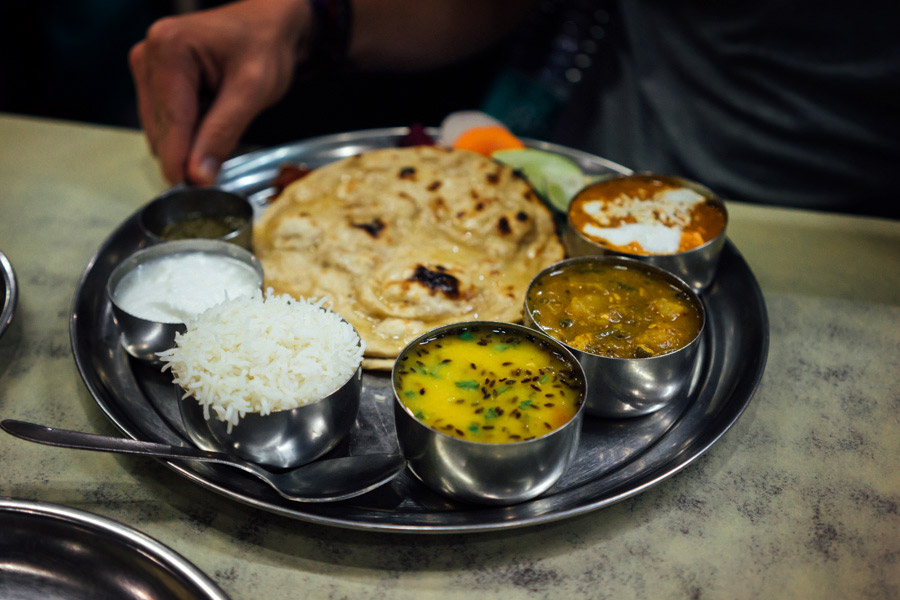
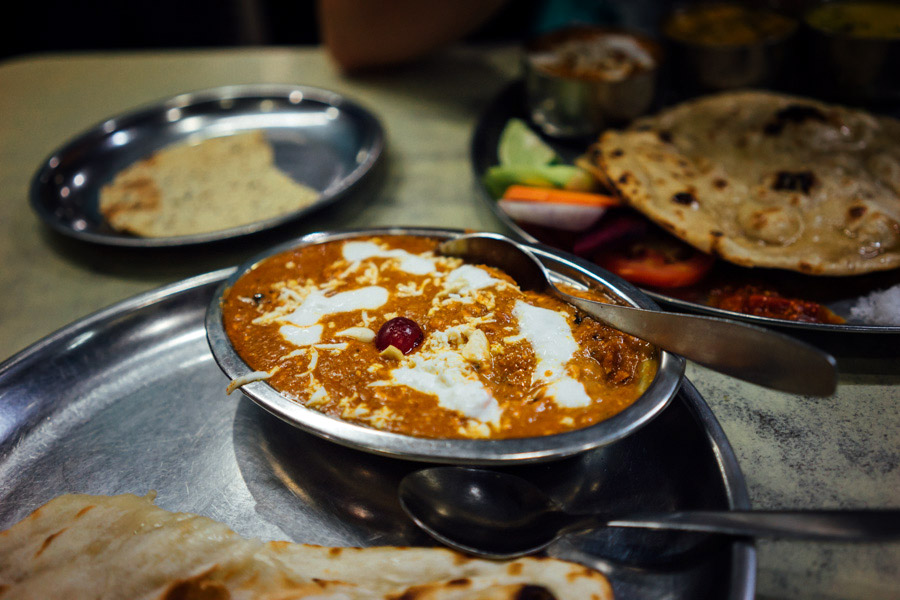
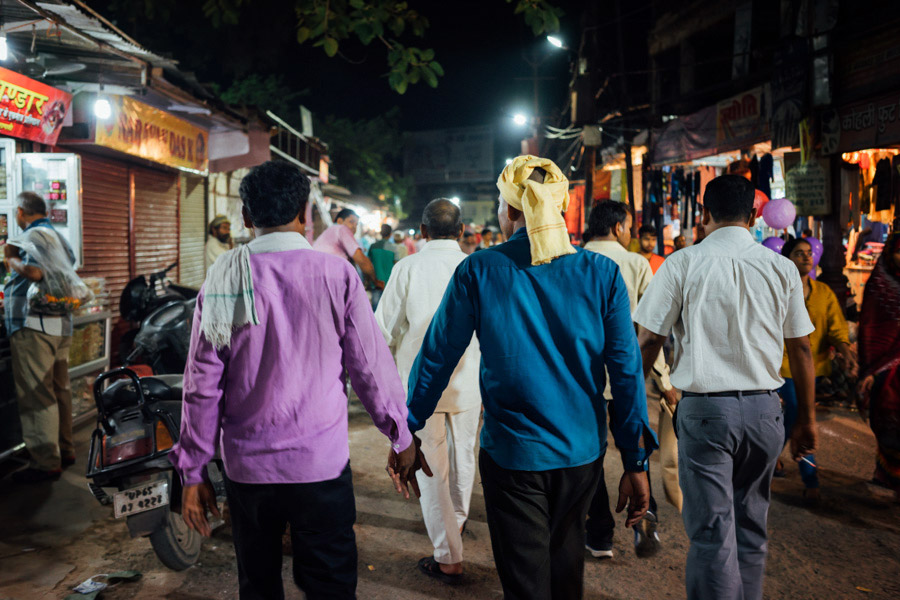
Links
Varanasi should not be missed. The pilgrimage town is a great, cheap way of getting introduced to the Indian culture, without the overwhelming amount of tourists in other parts of Rajasthan.
- Aarti is the incredible fire ceremony on Dashashwamedh Ghat, seven days a week.
- You can also go to the sunrise ceremony, where you can practice your yoga on classical music at the Assi Ghat.
- The best way to visit the town is simply to stroll around the city, ignoring most touts or people forcing the red dot of makeup. The northern part of the old town holds most babas, the ascetic monks.
- They say Varanasi is not visited until seen by boat, and this might be true. Find any cheap one directly on the dock and haggle your price down. Do not give in to people offering flowers and candles to donate to the Ganges (despite the threat of bad luck and cursing, nothing happened to us!).













